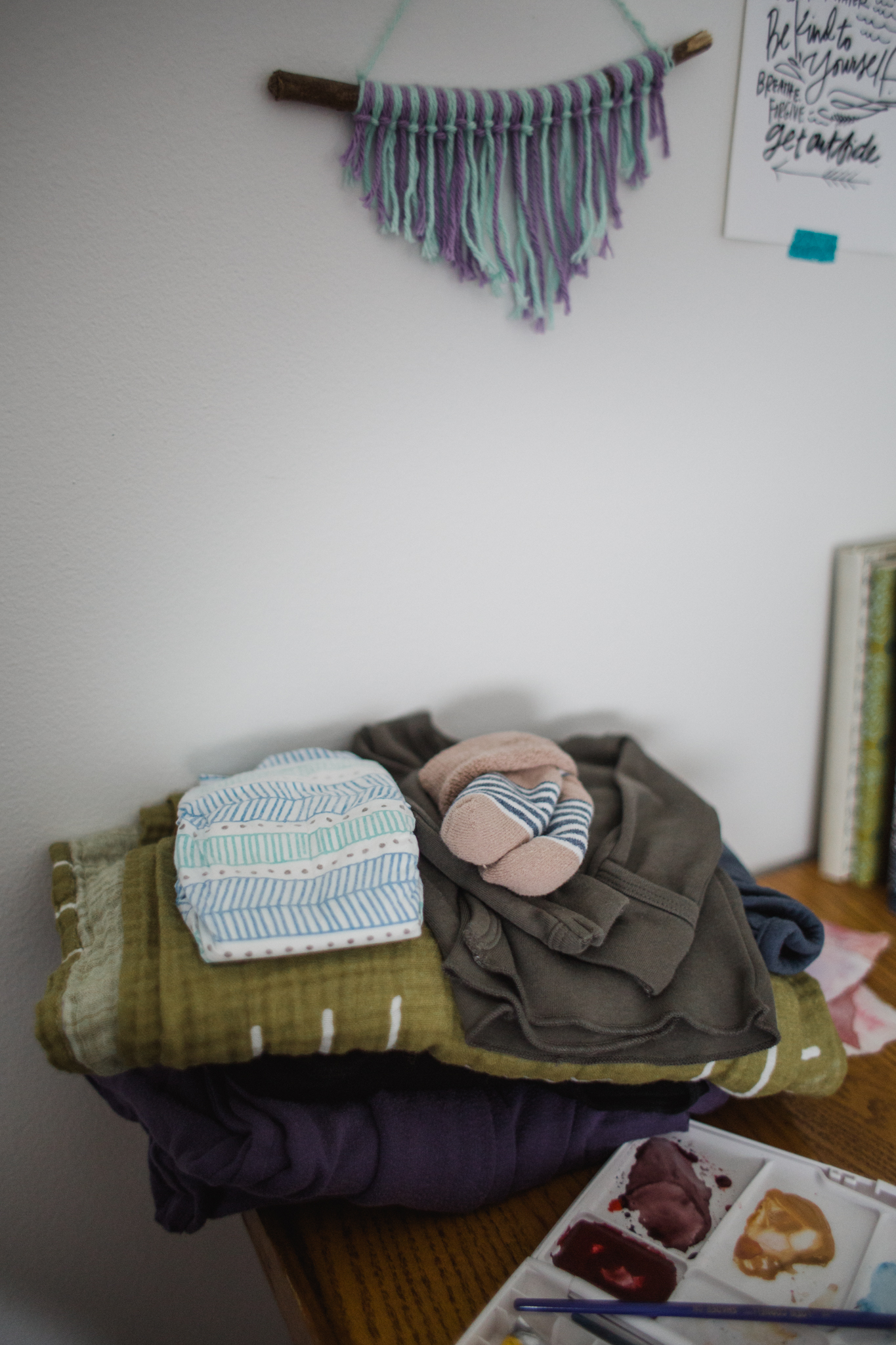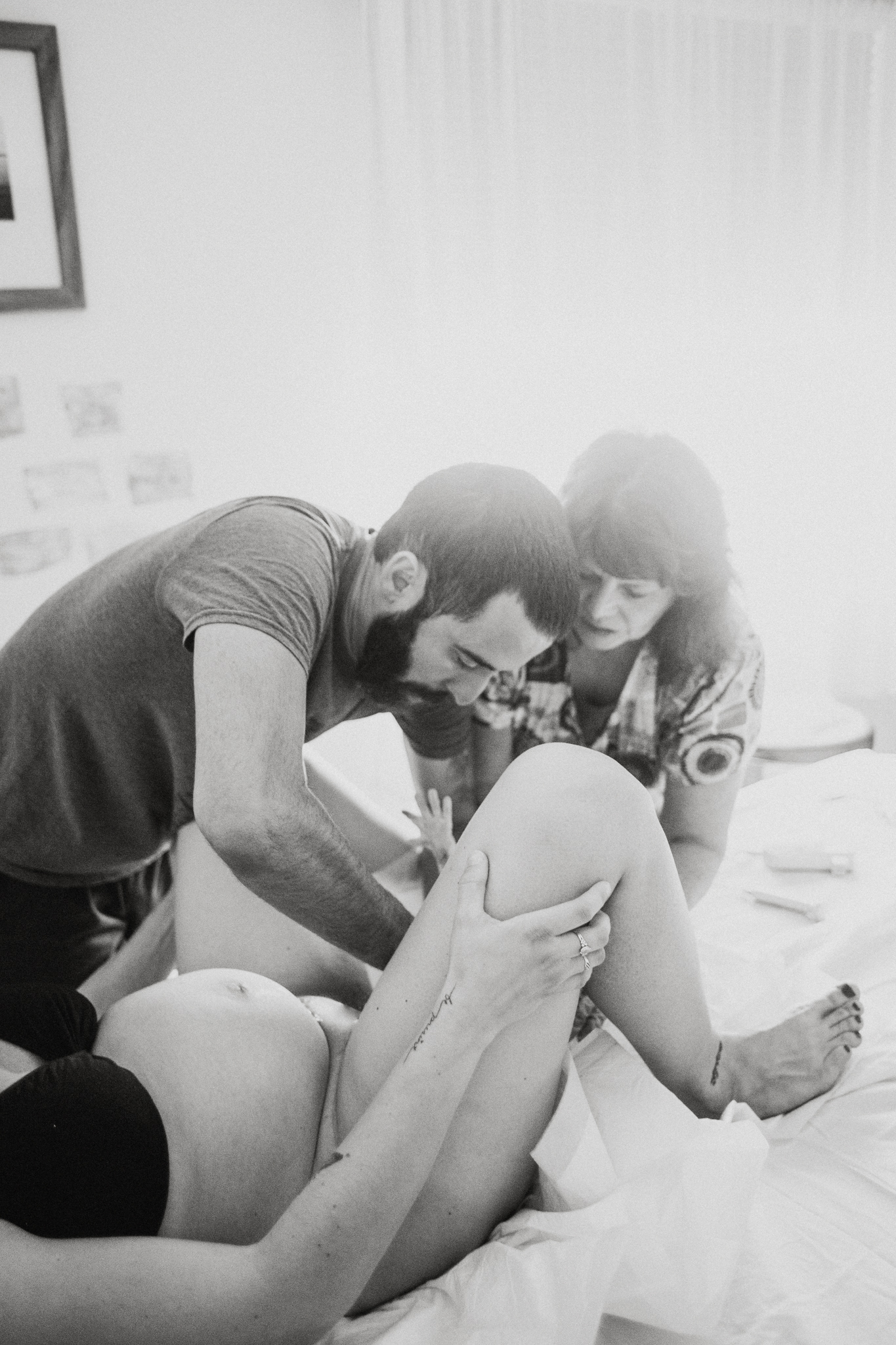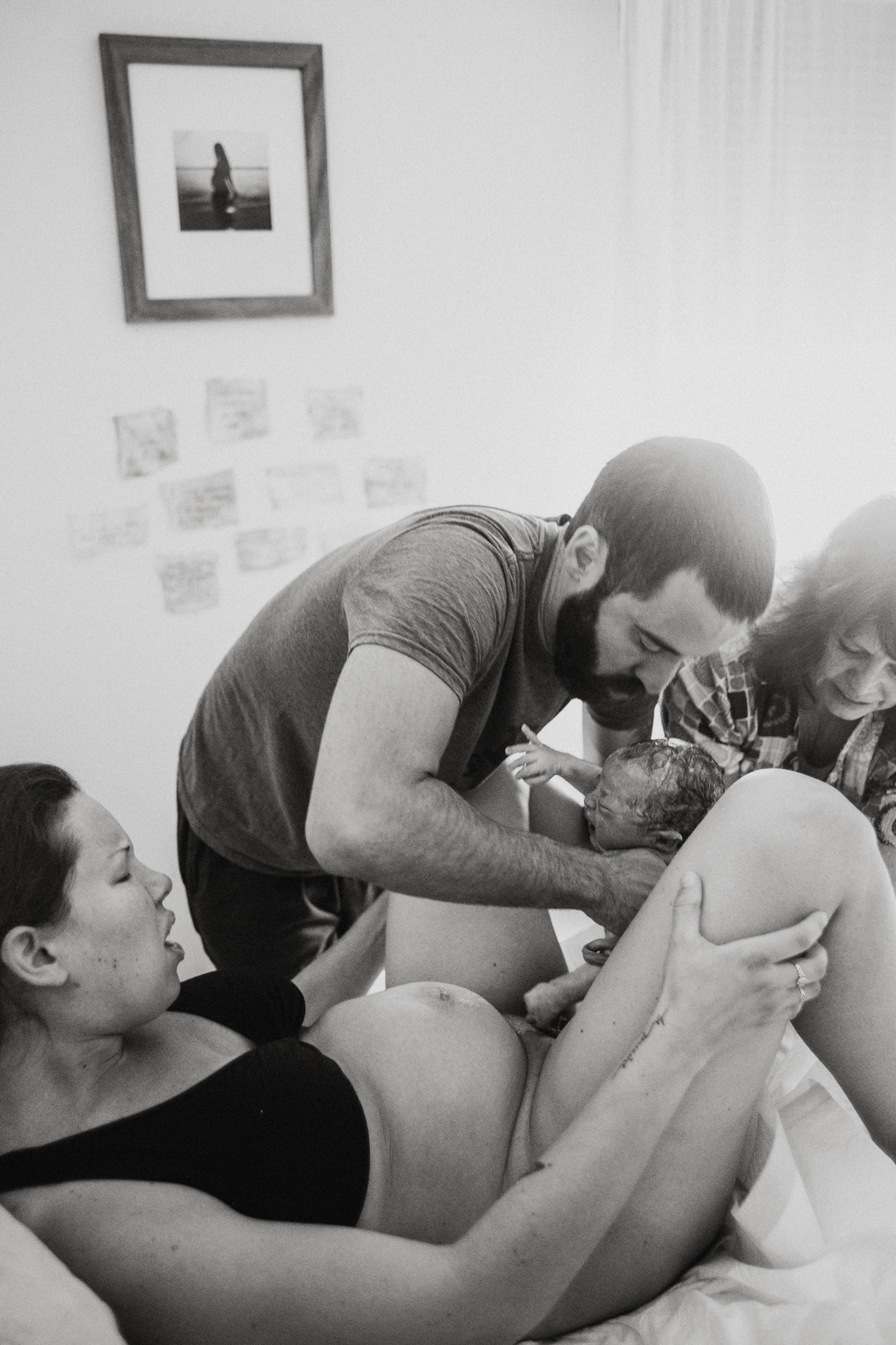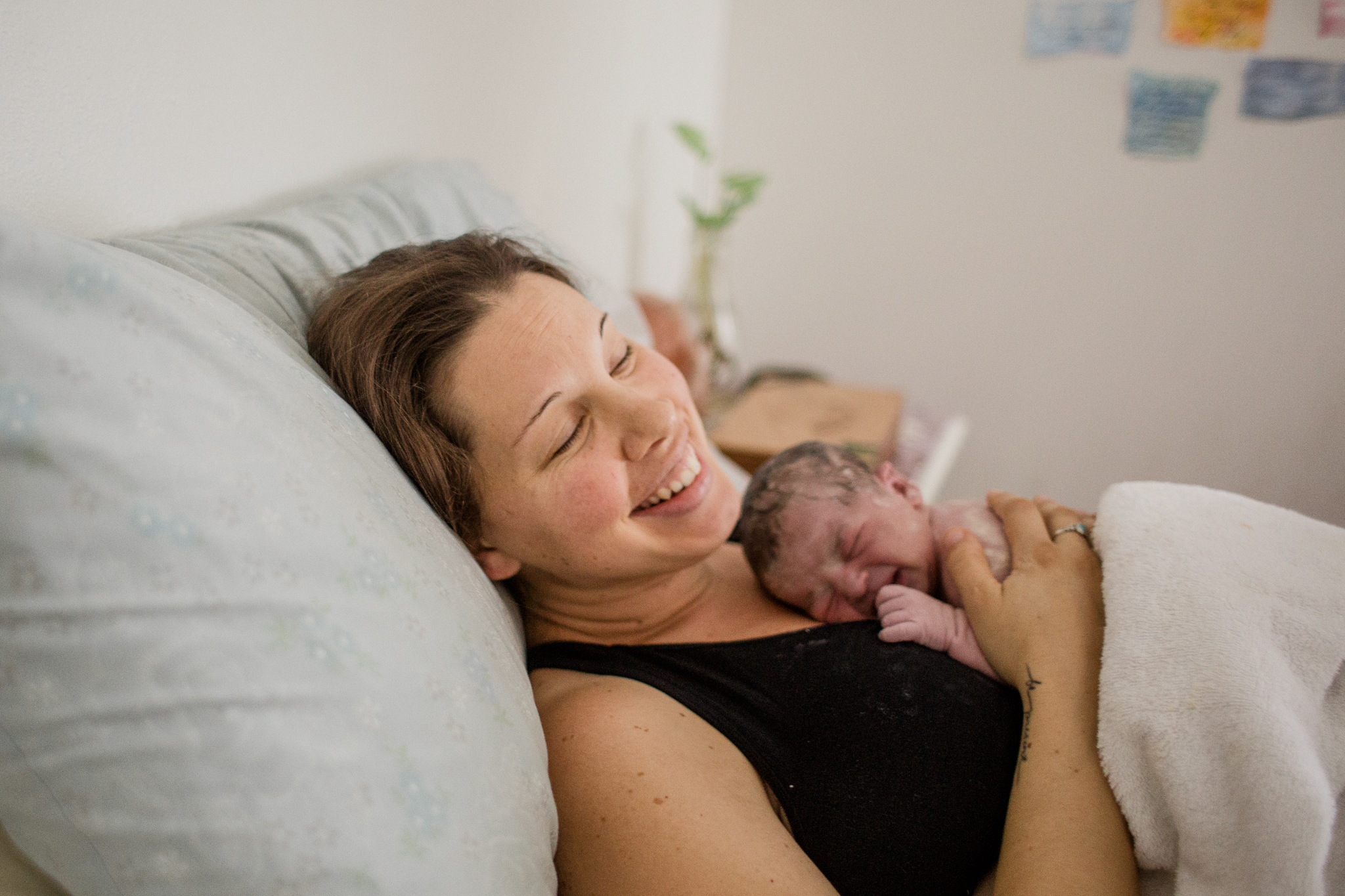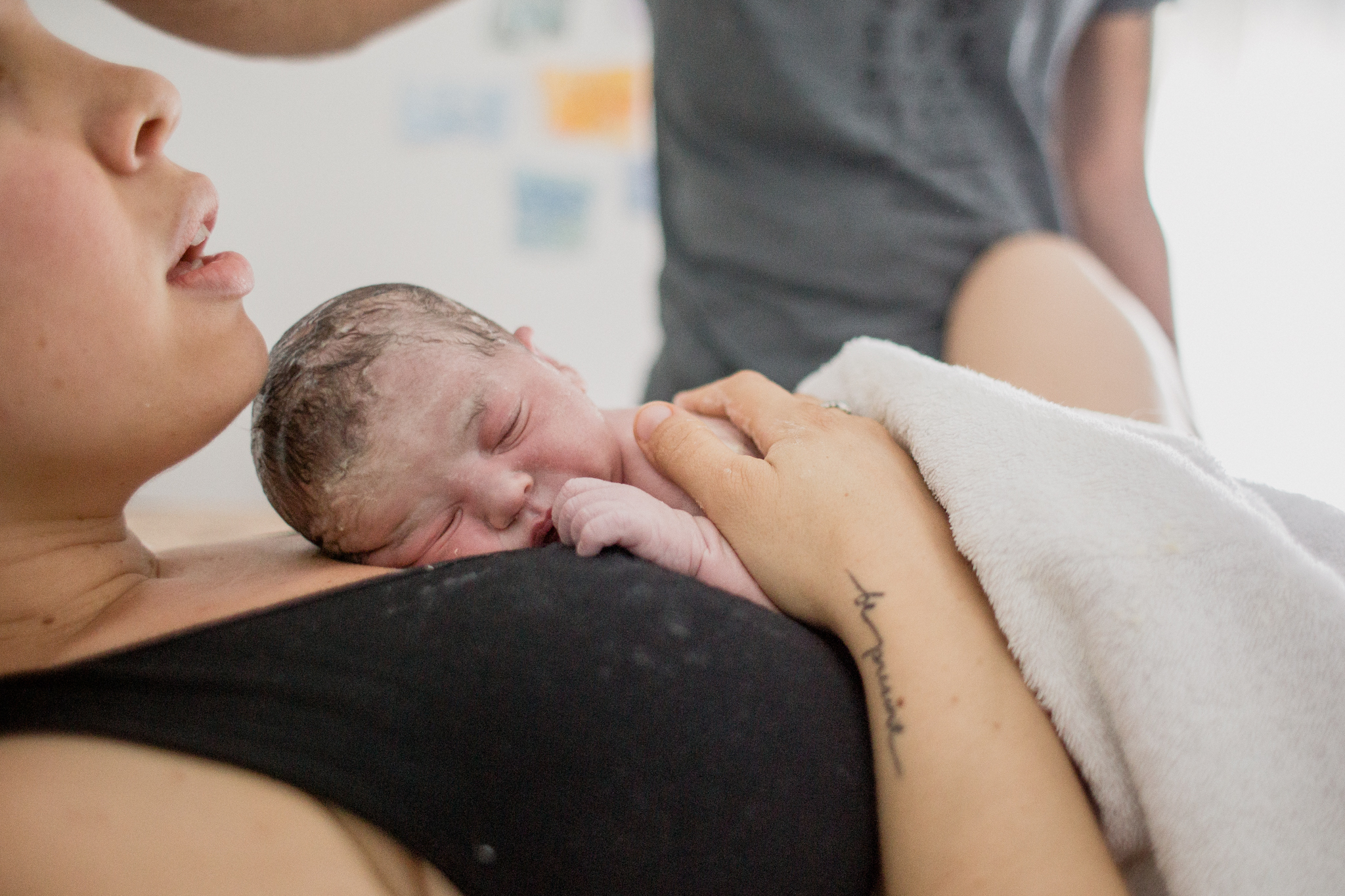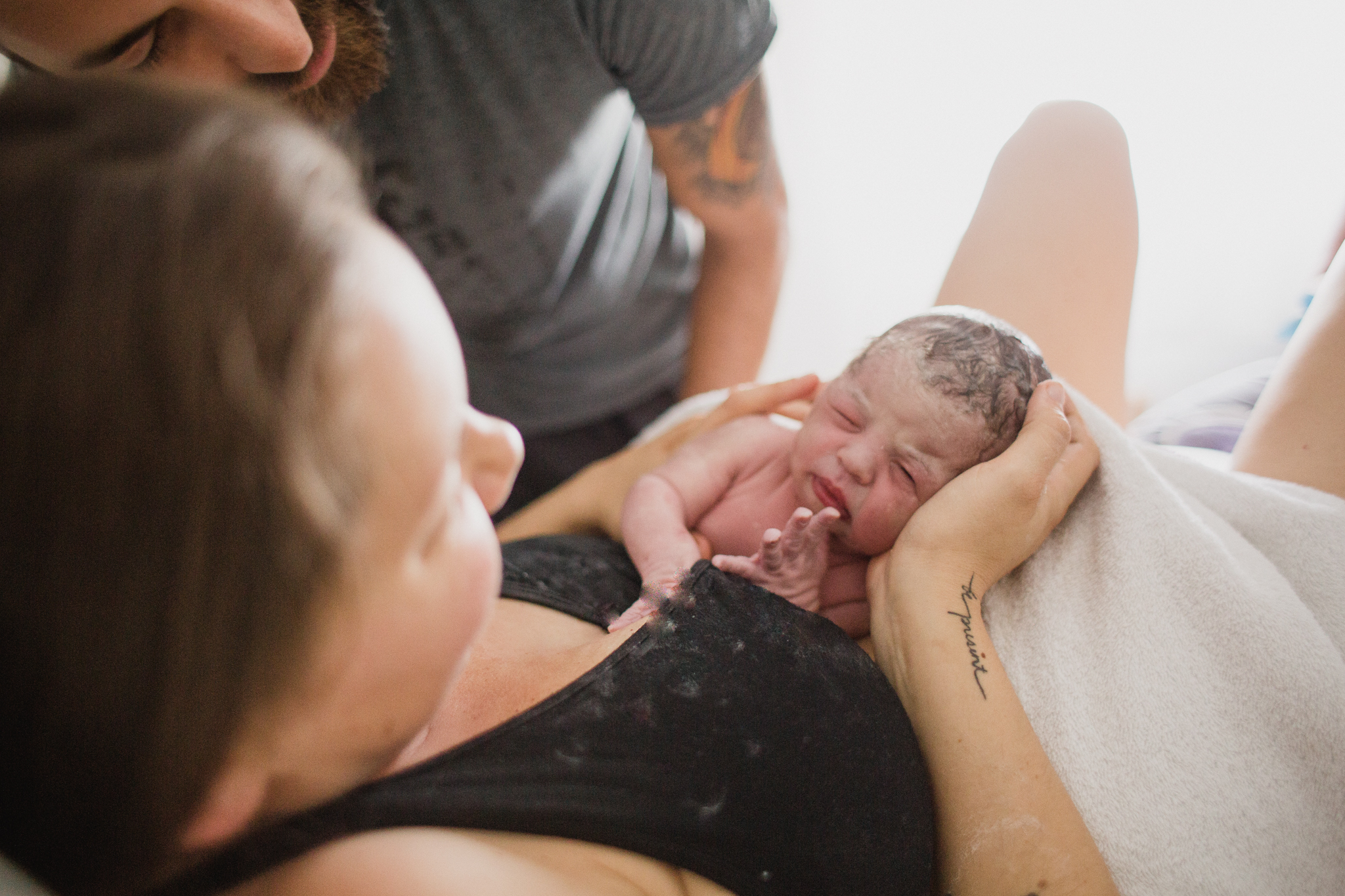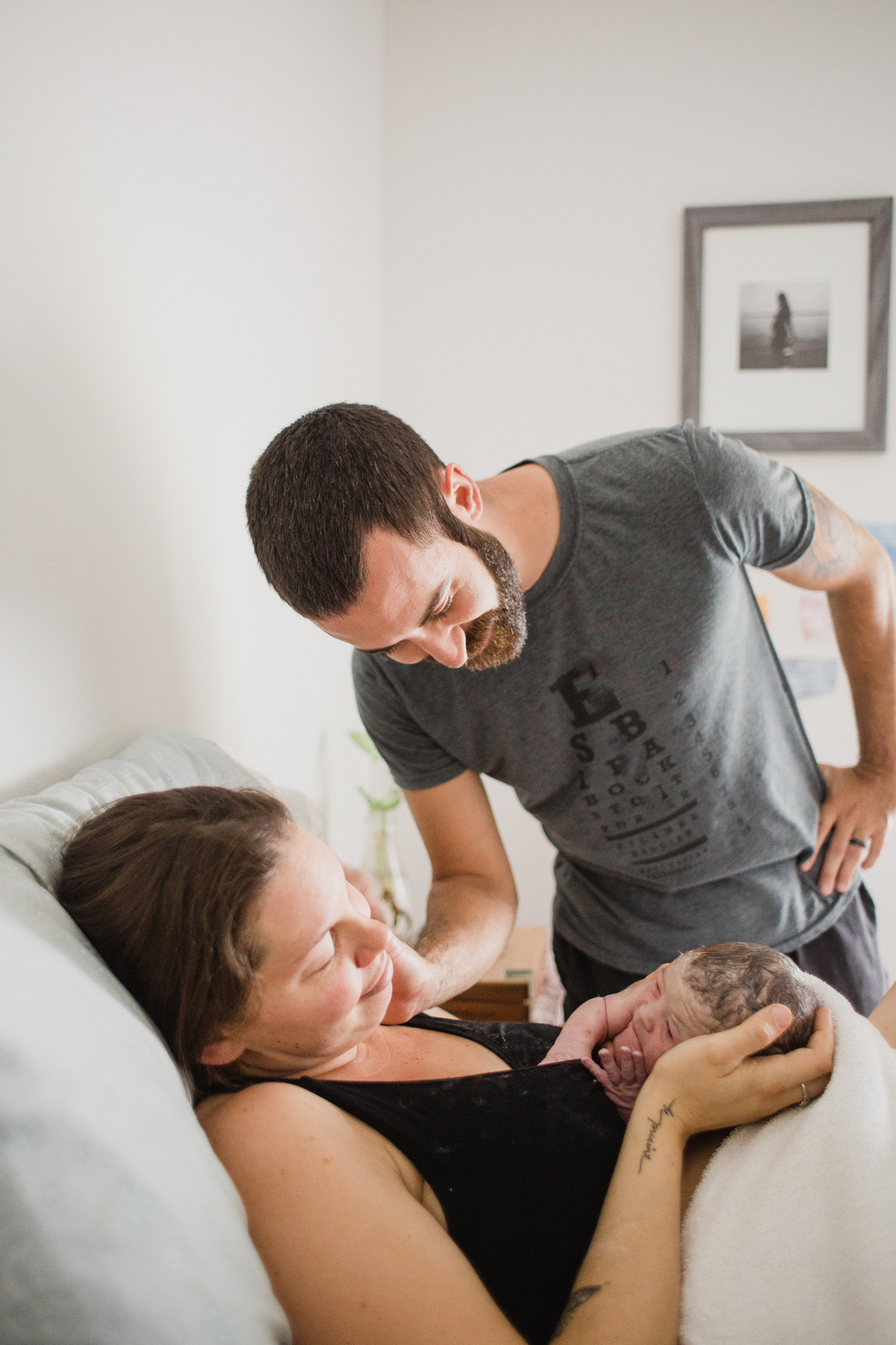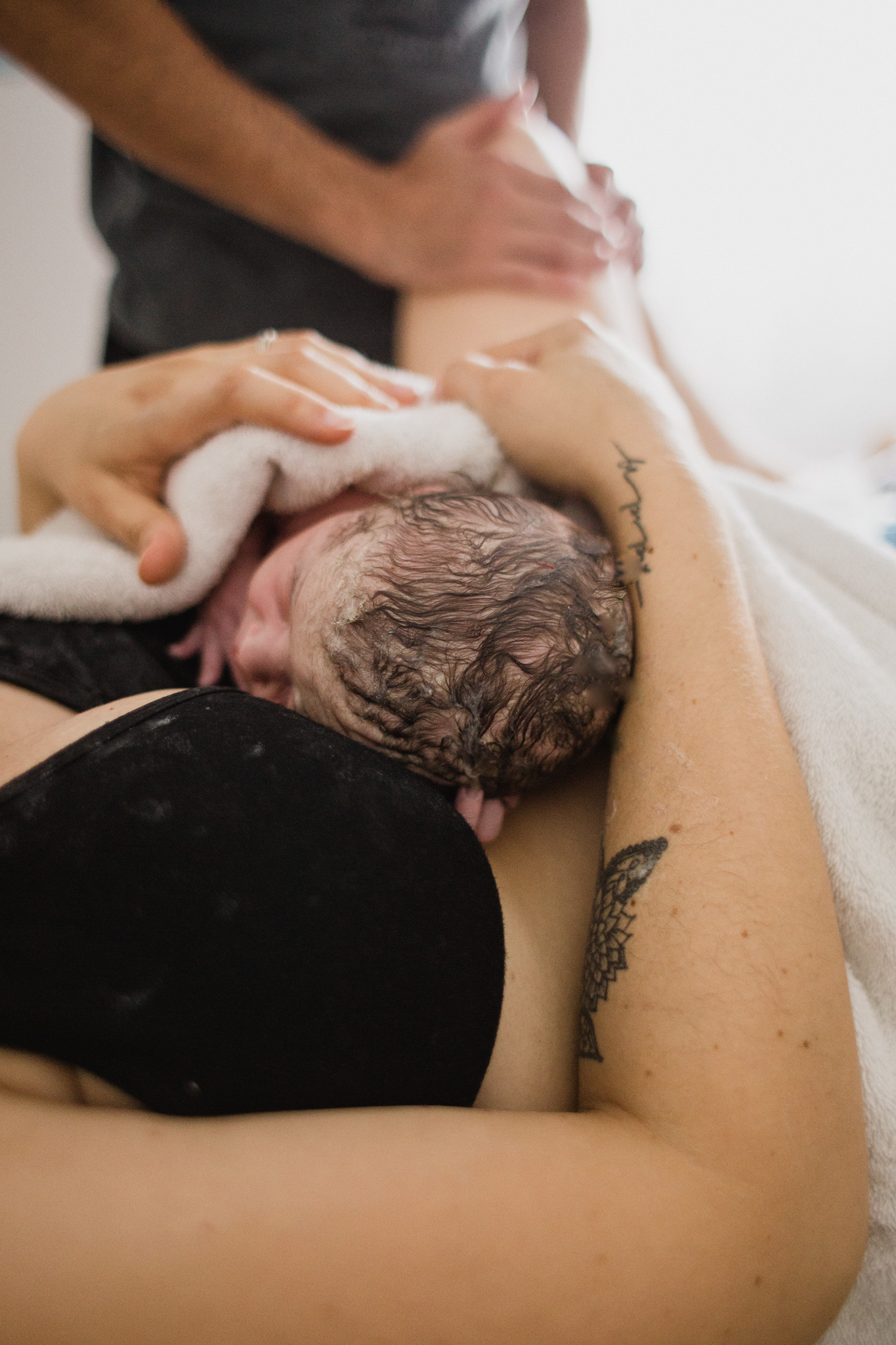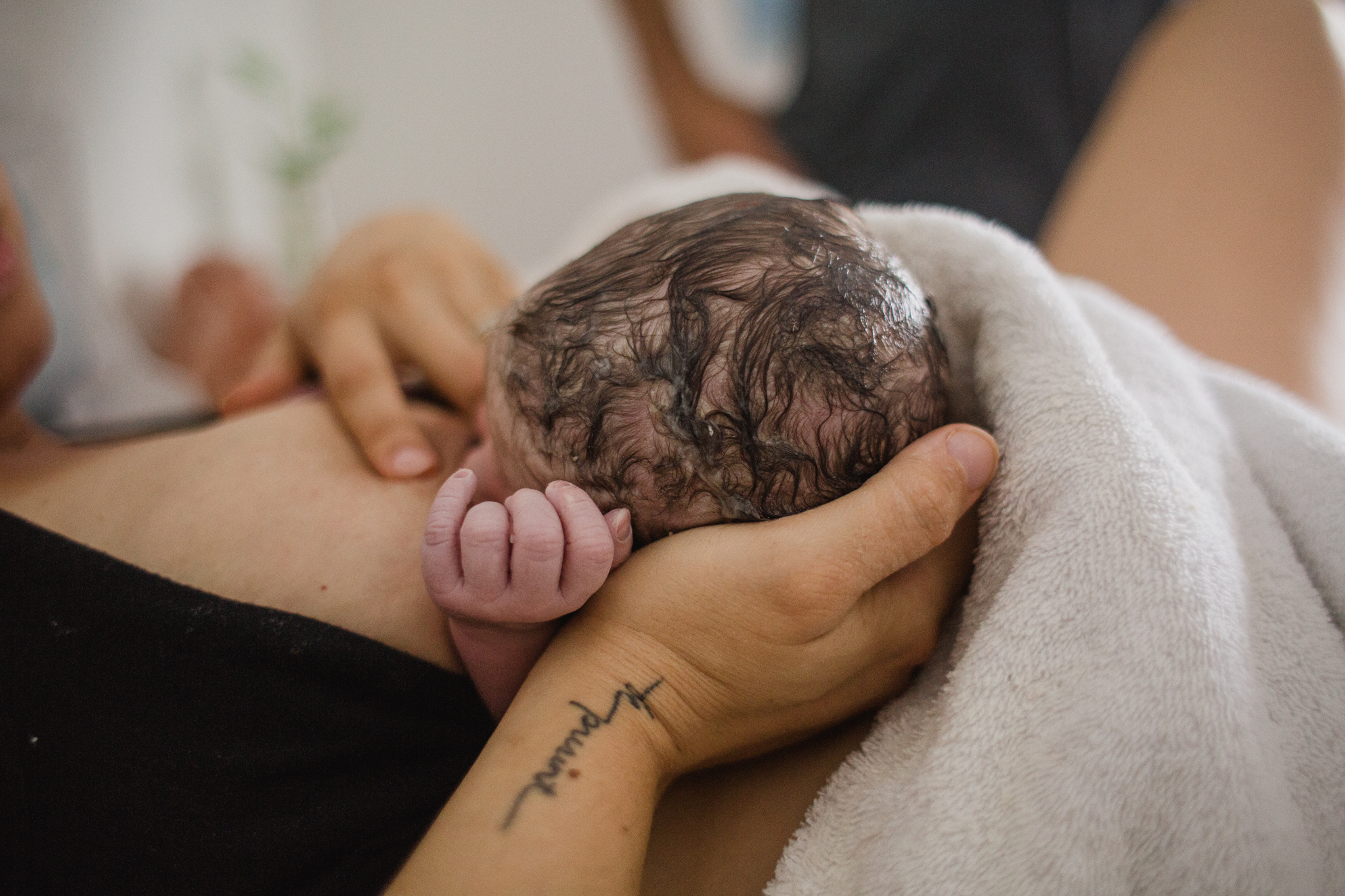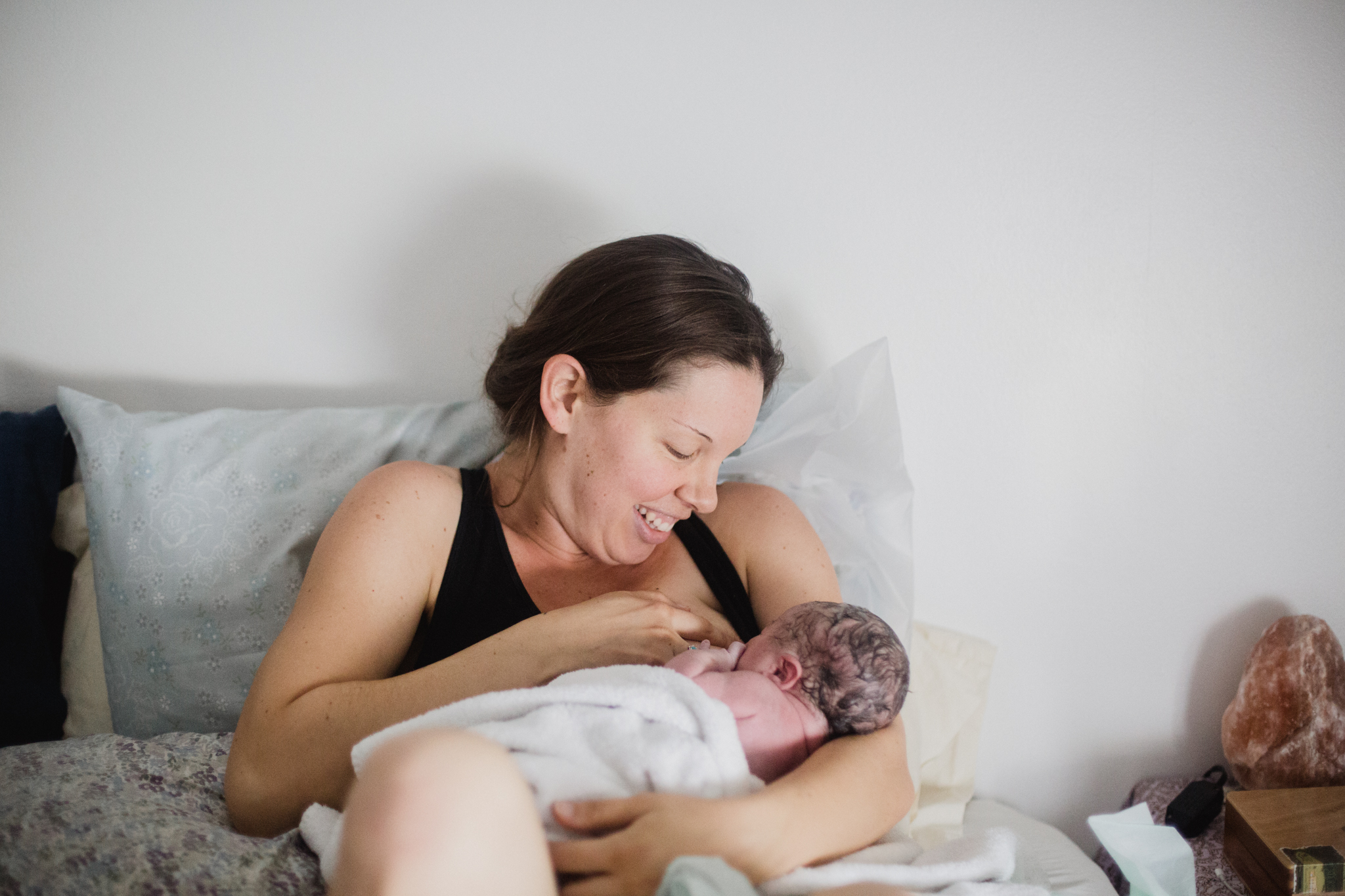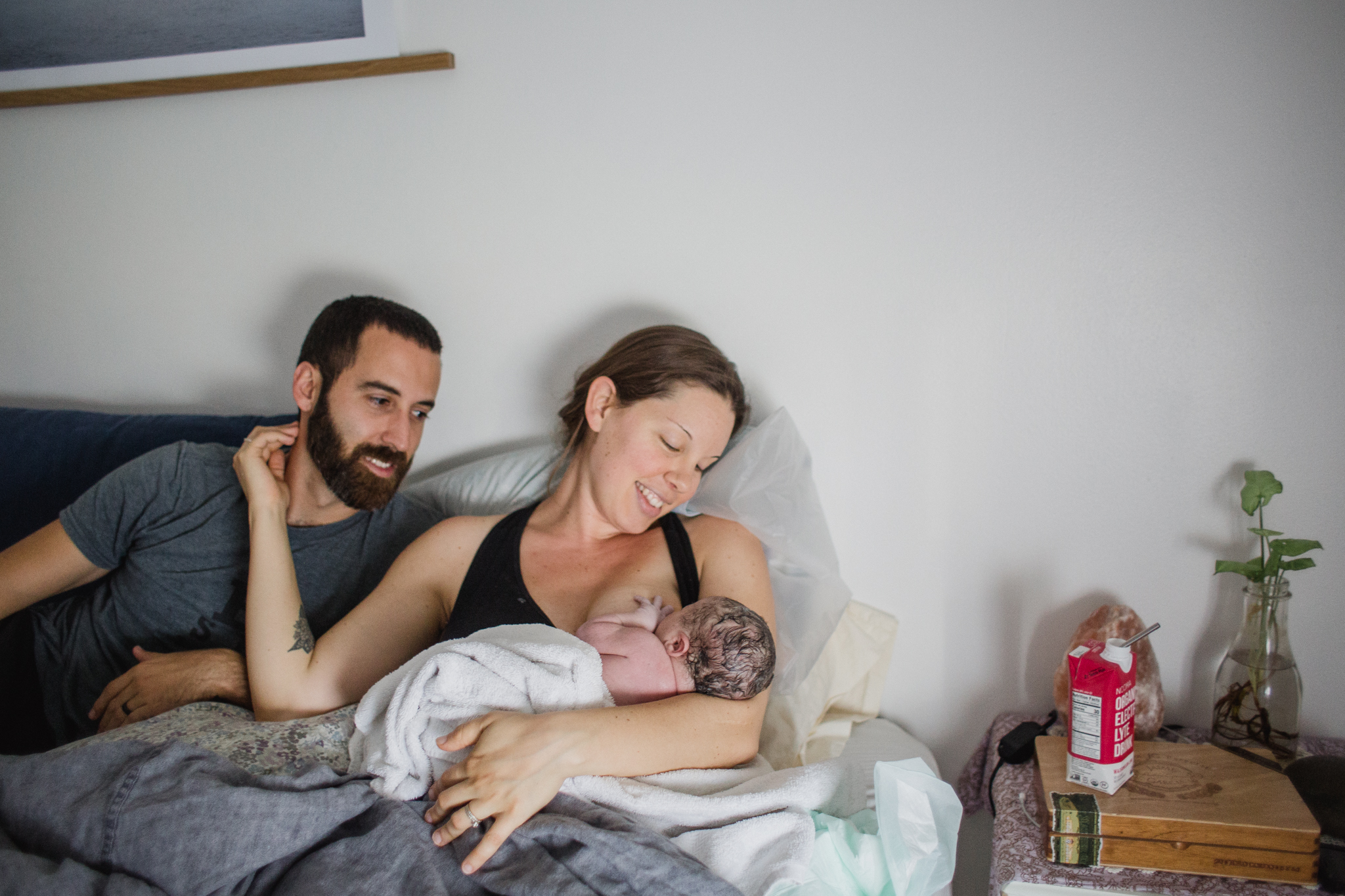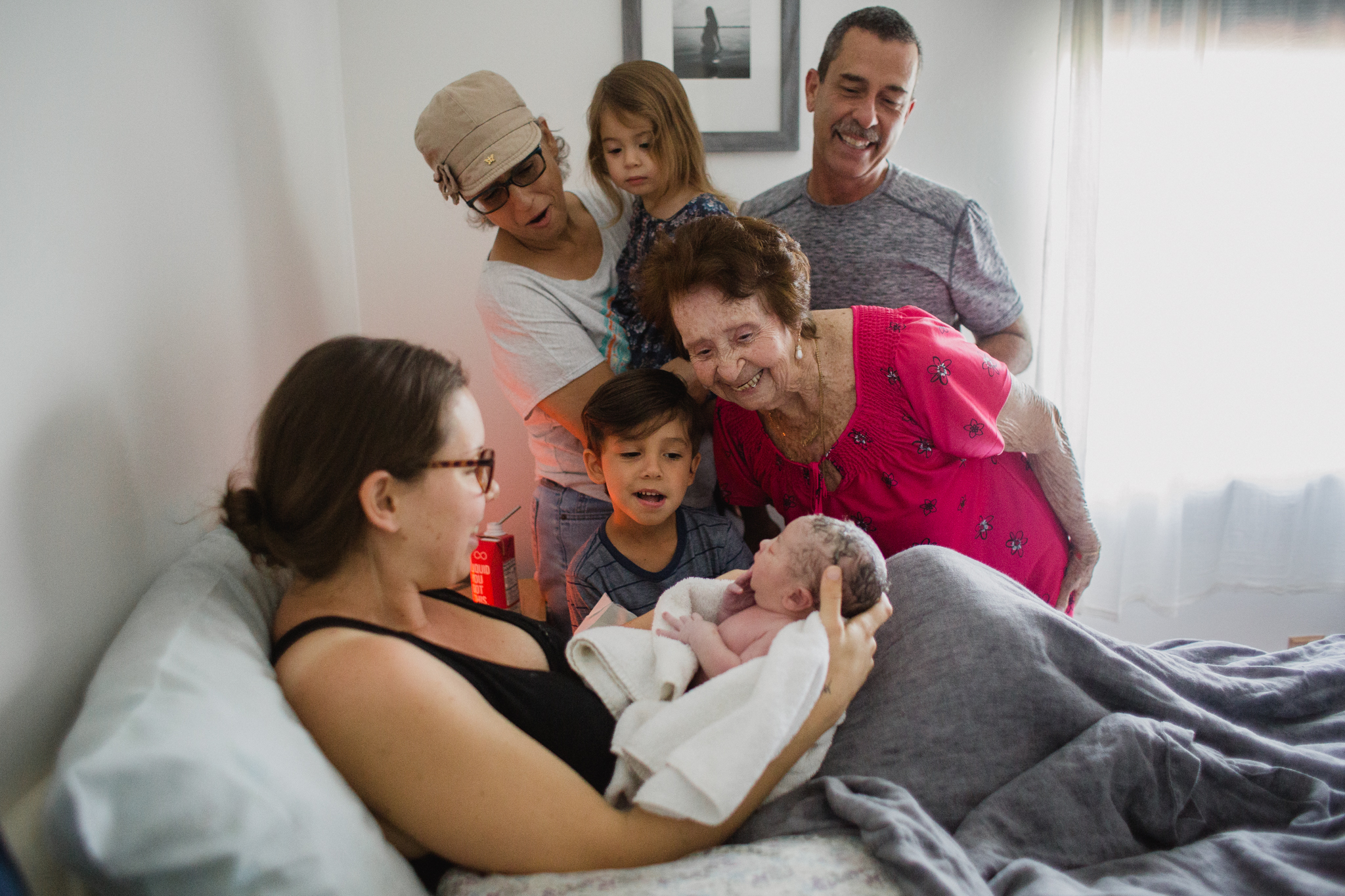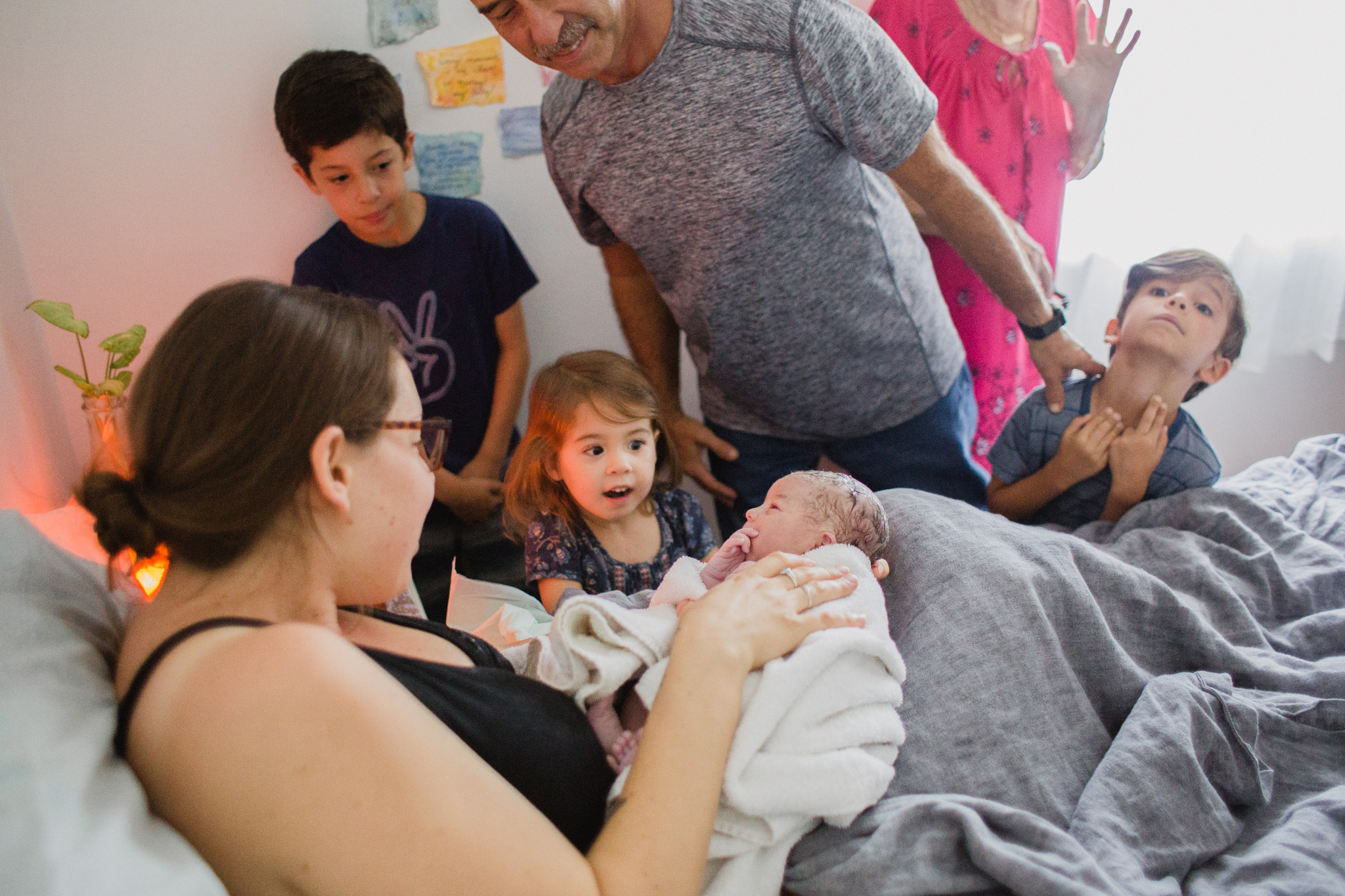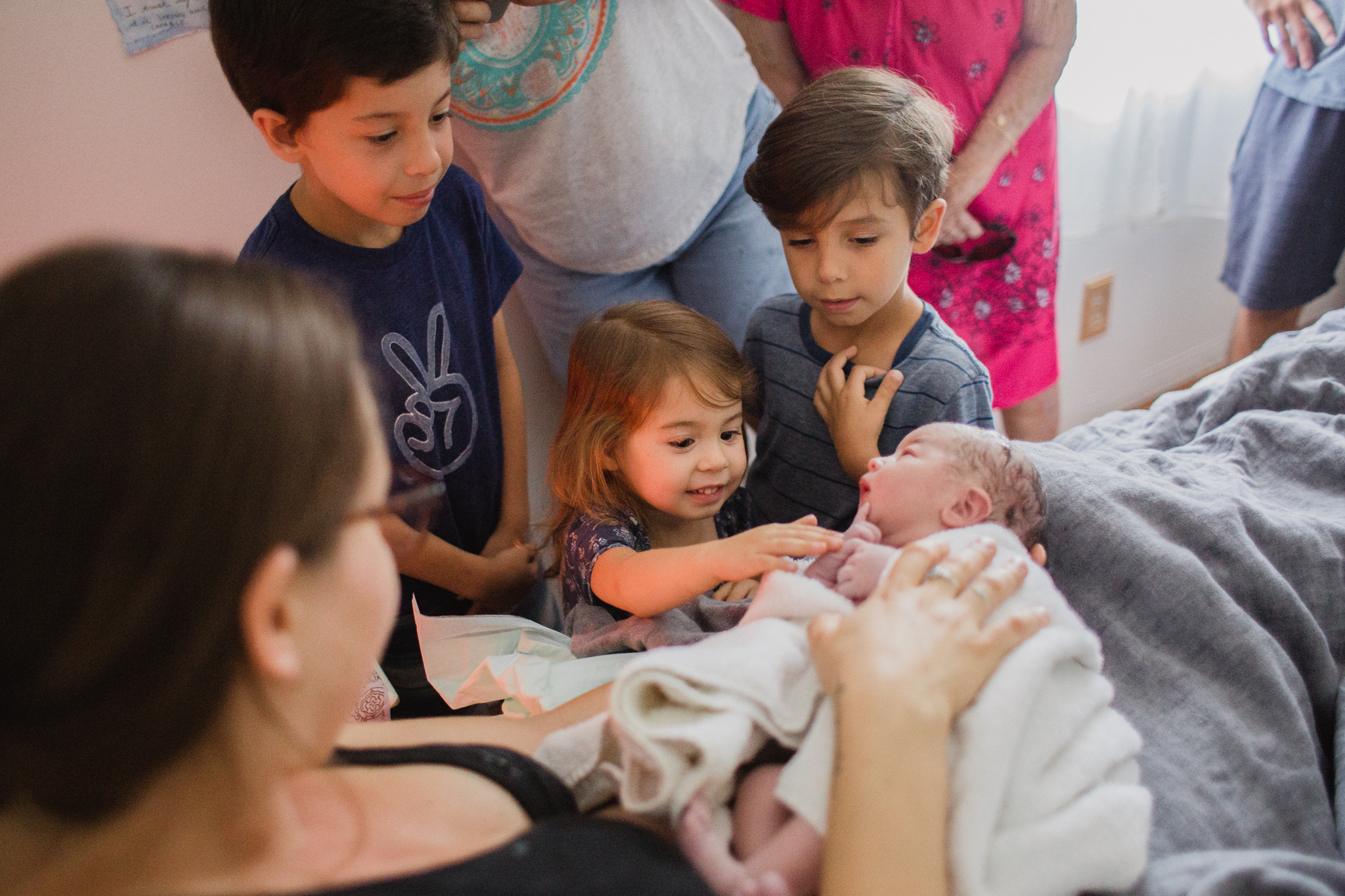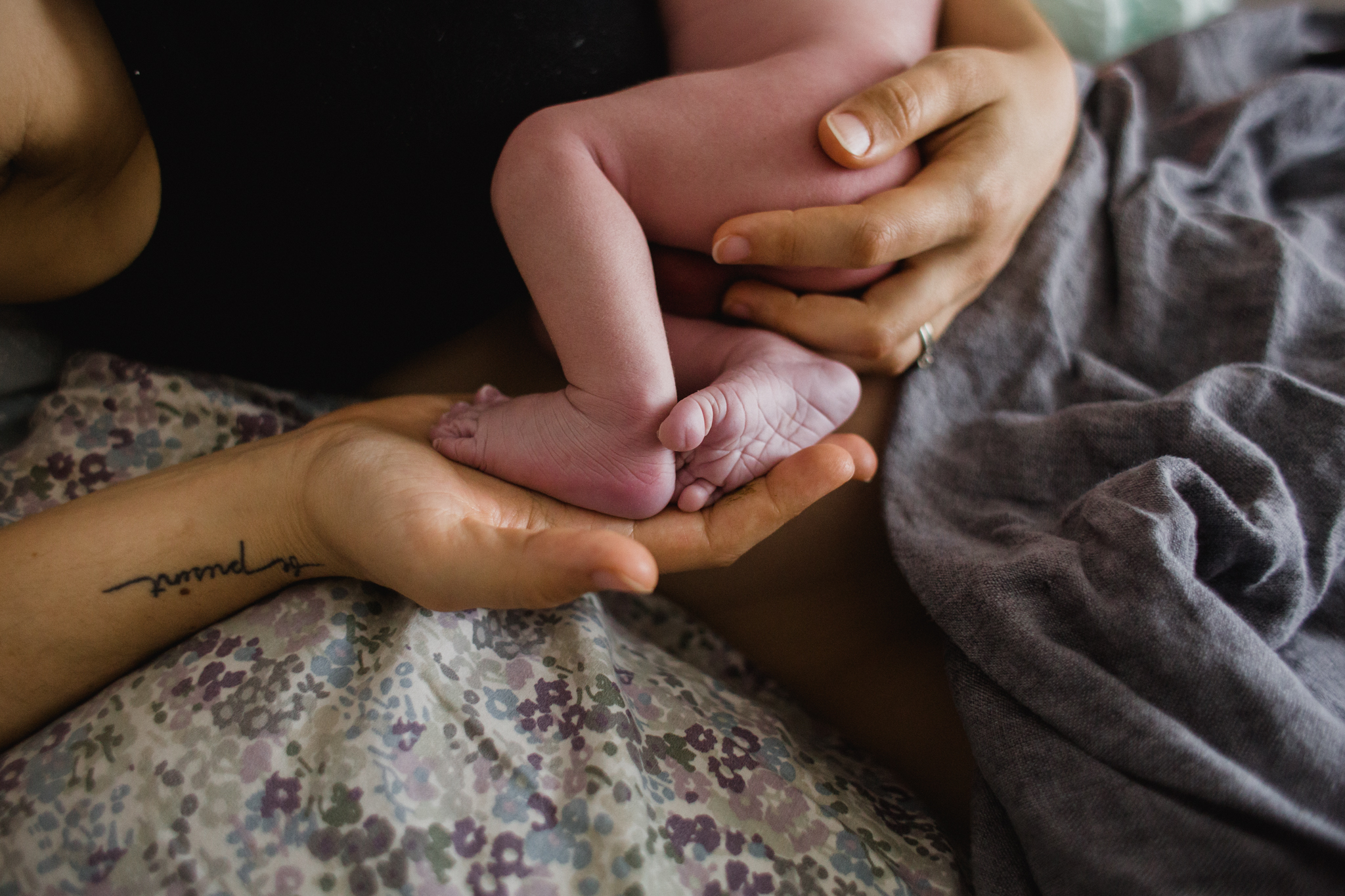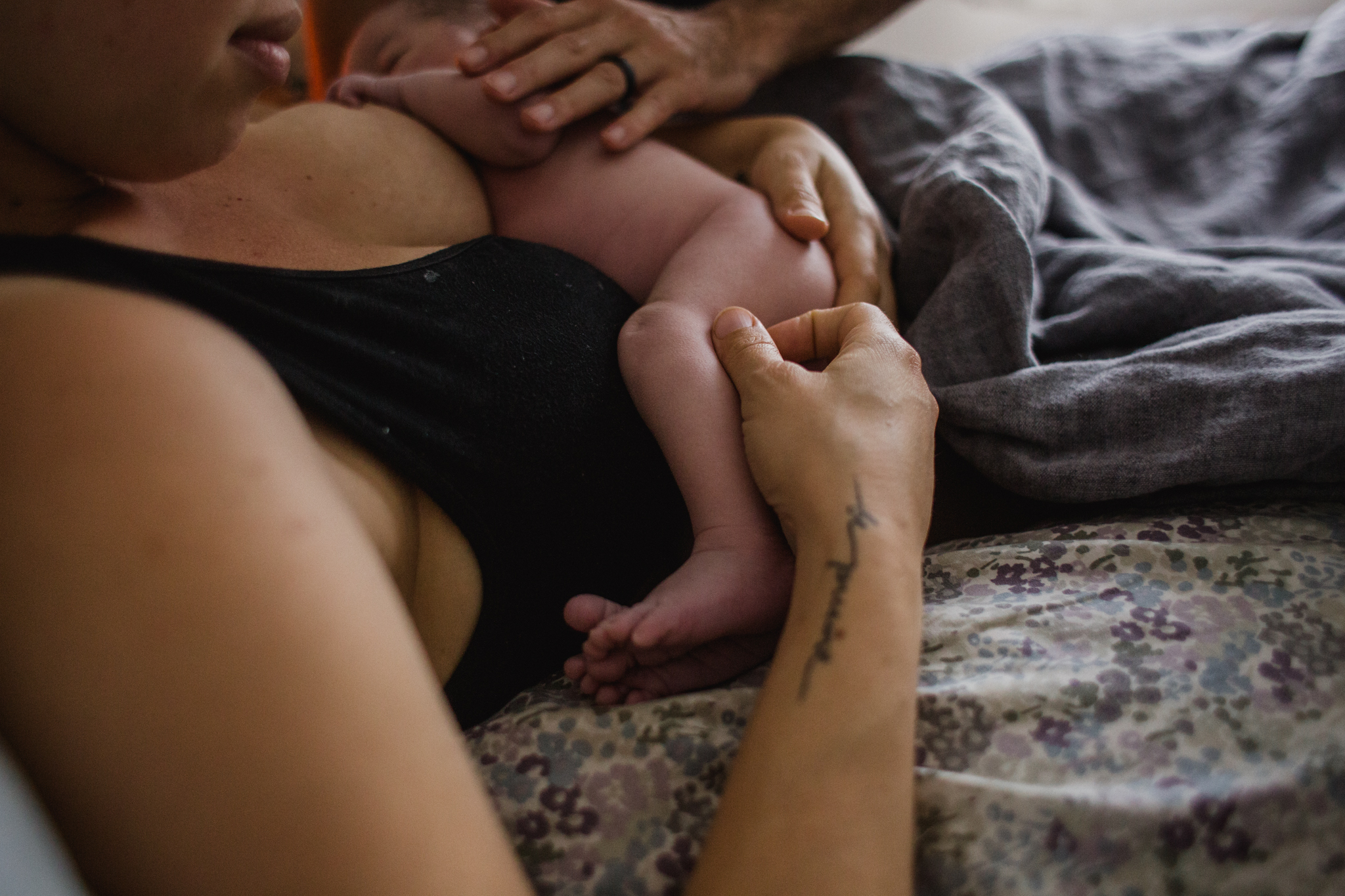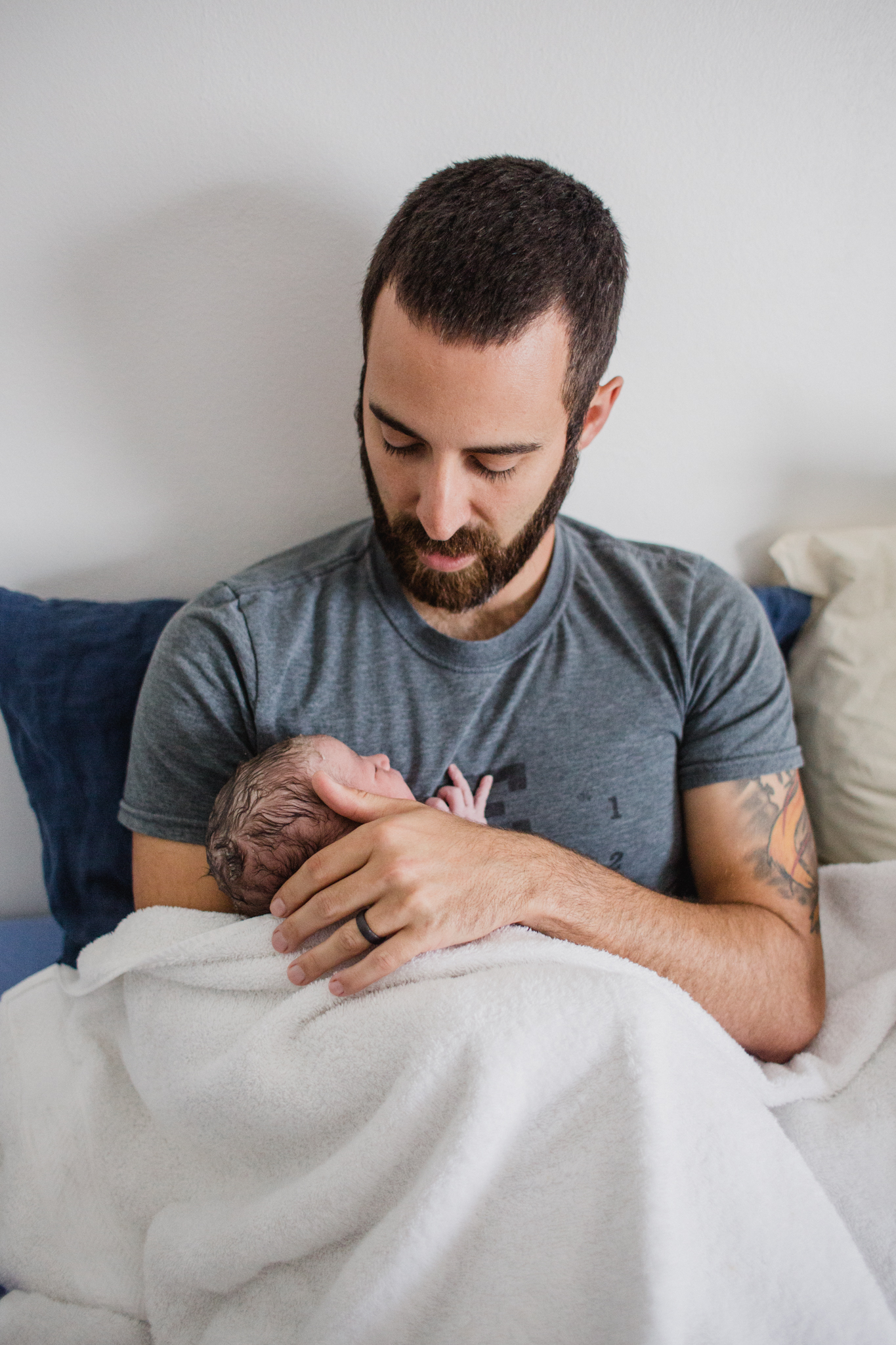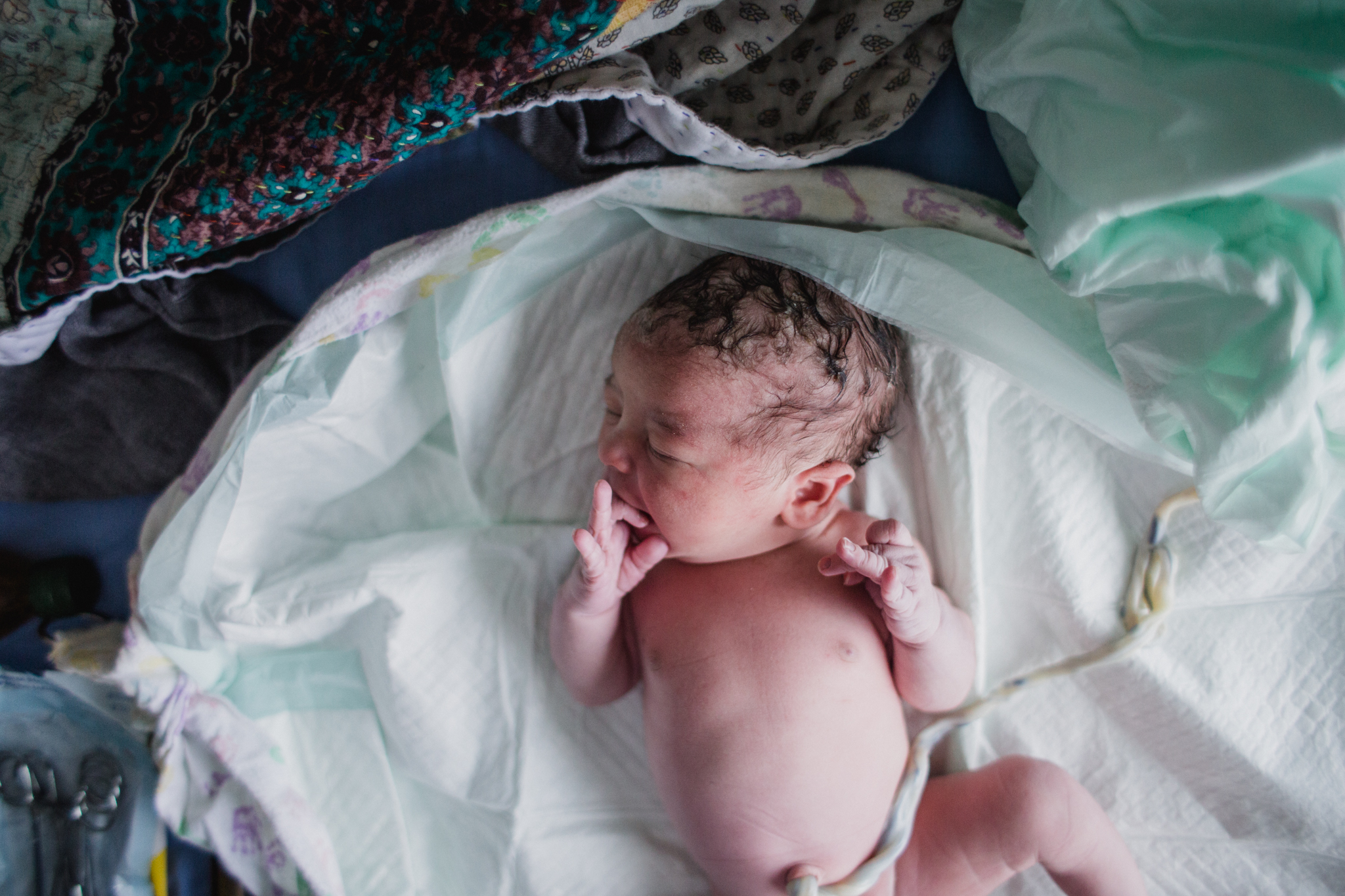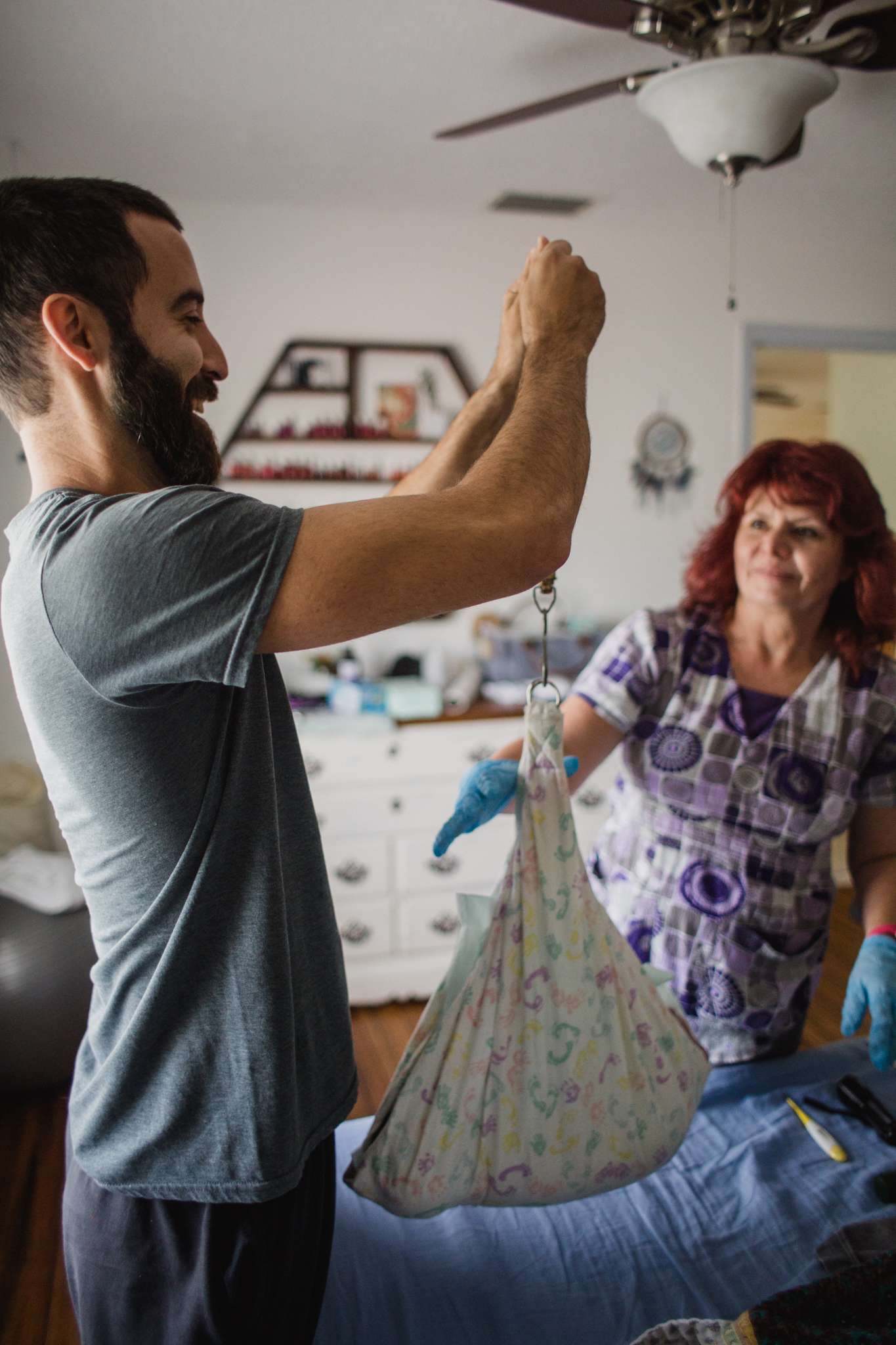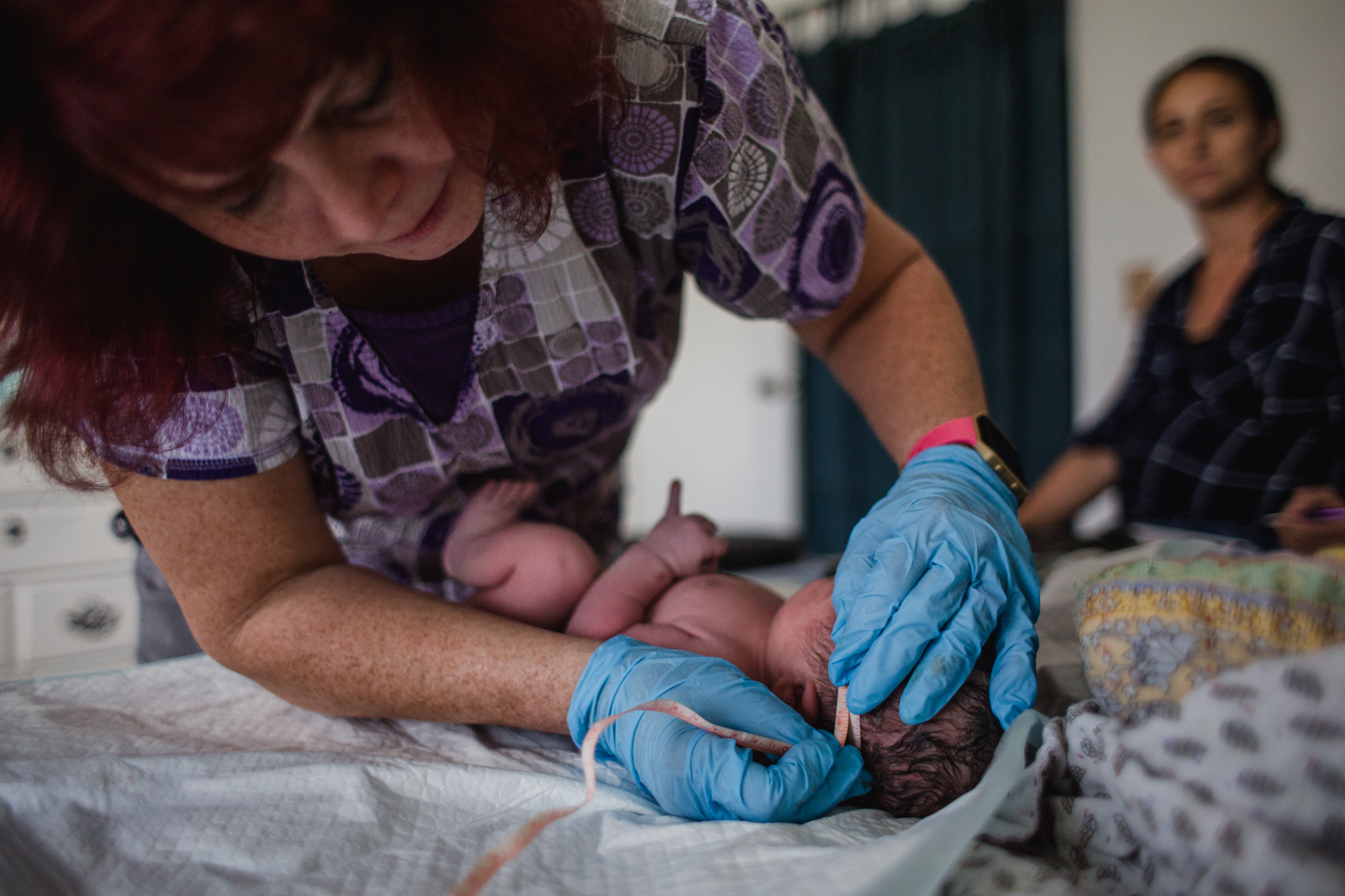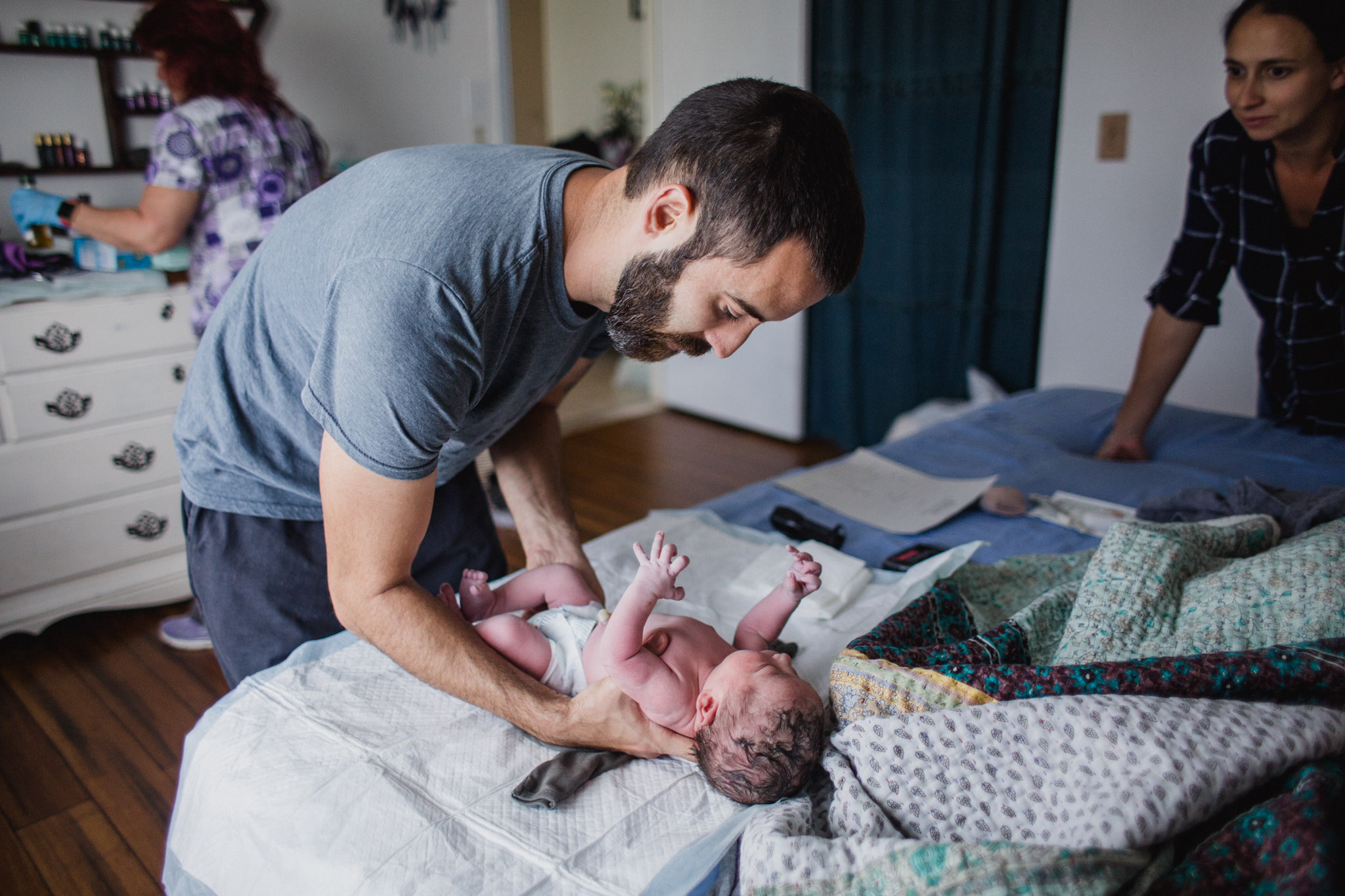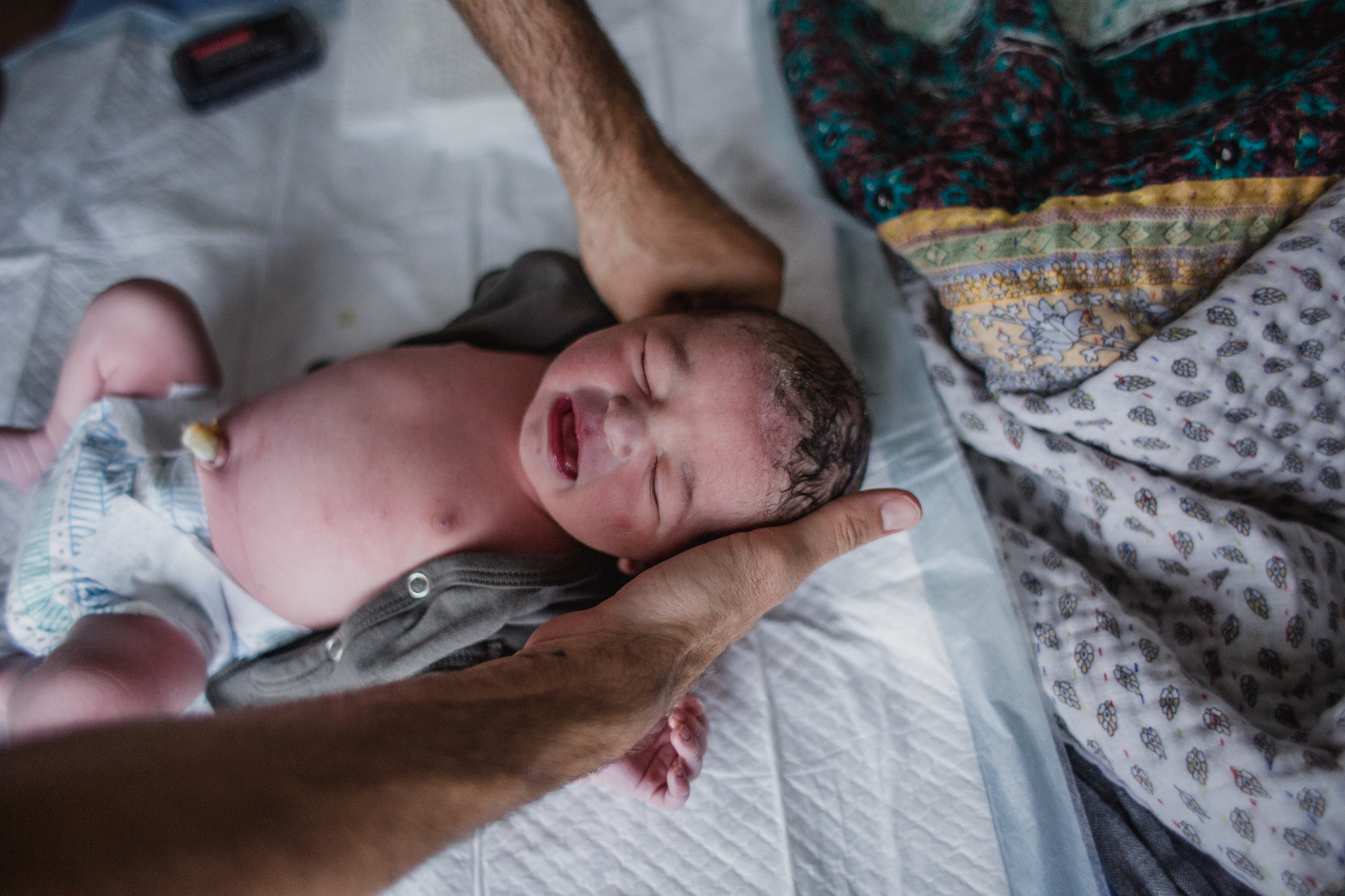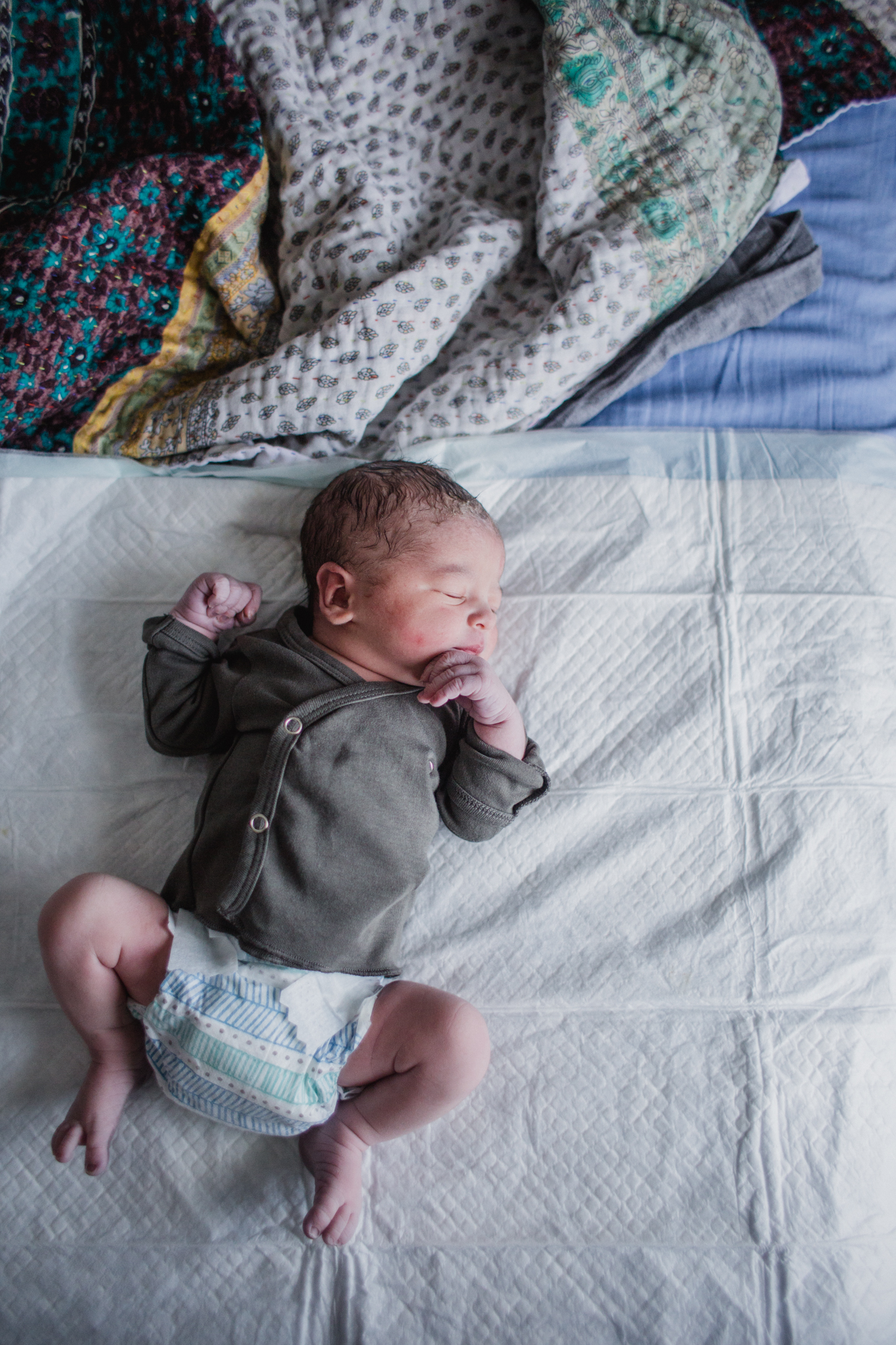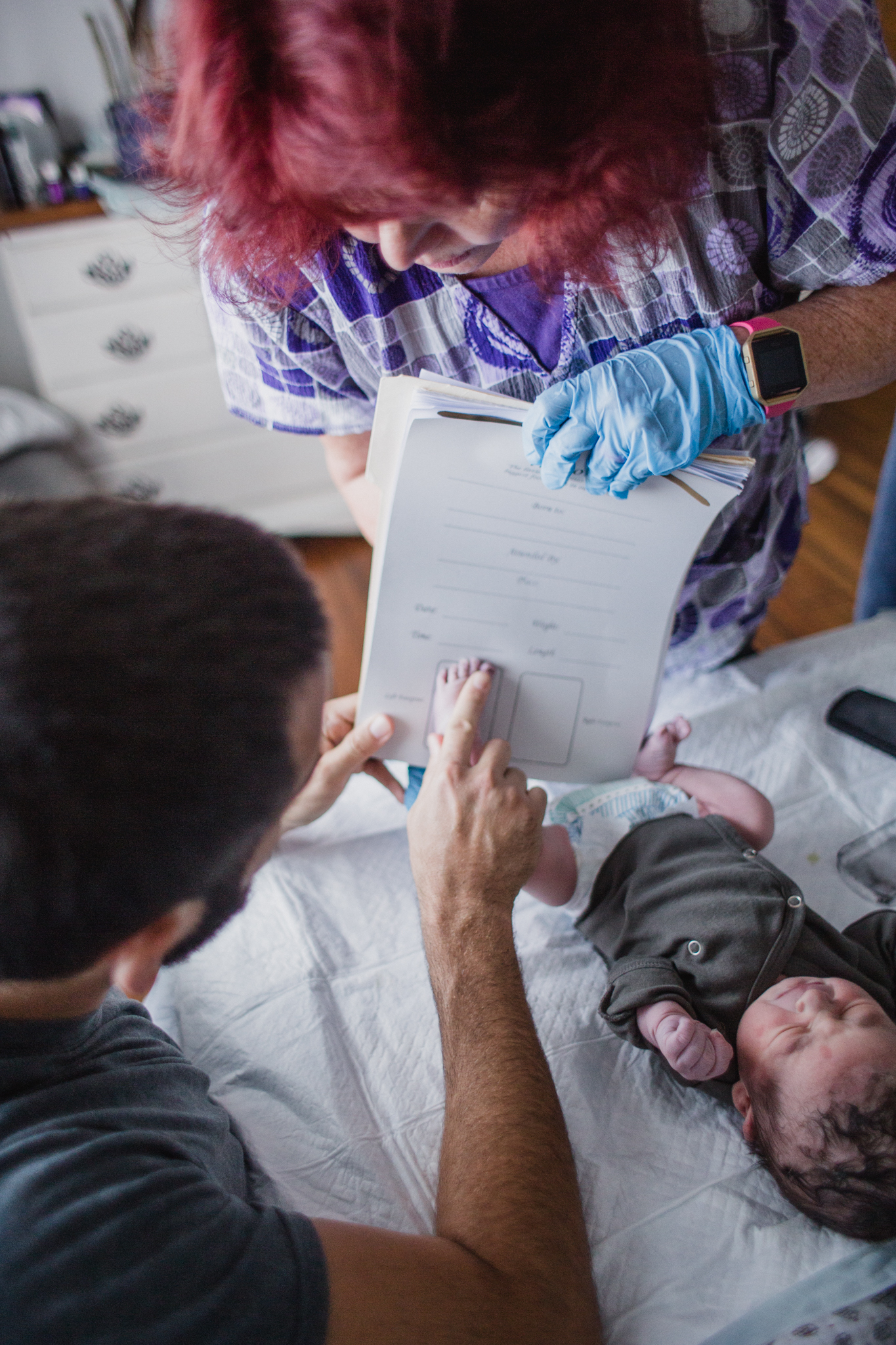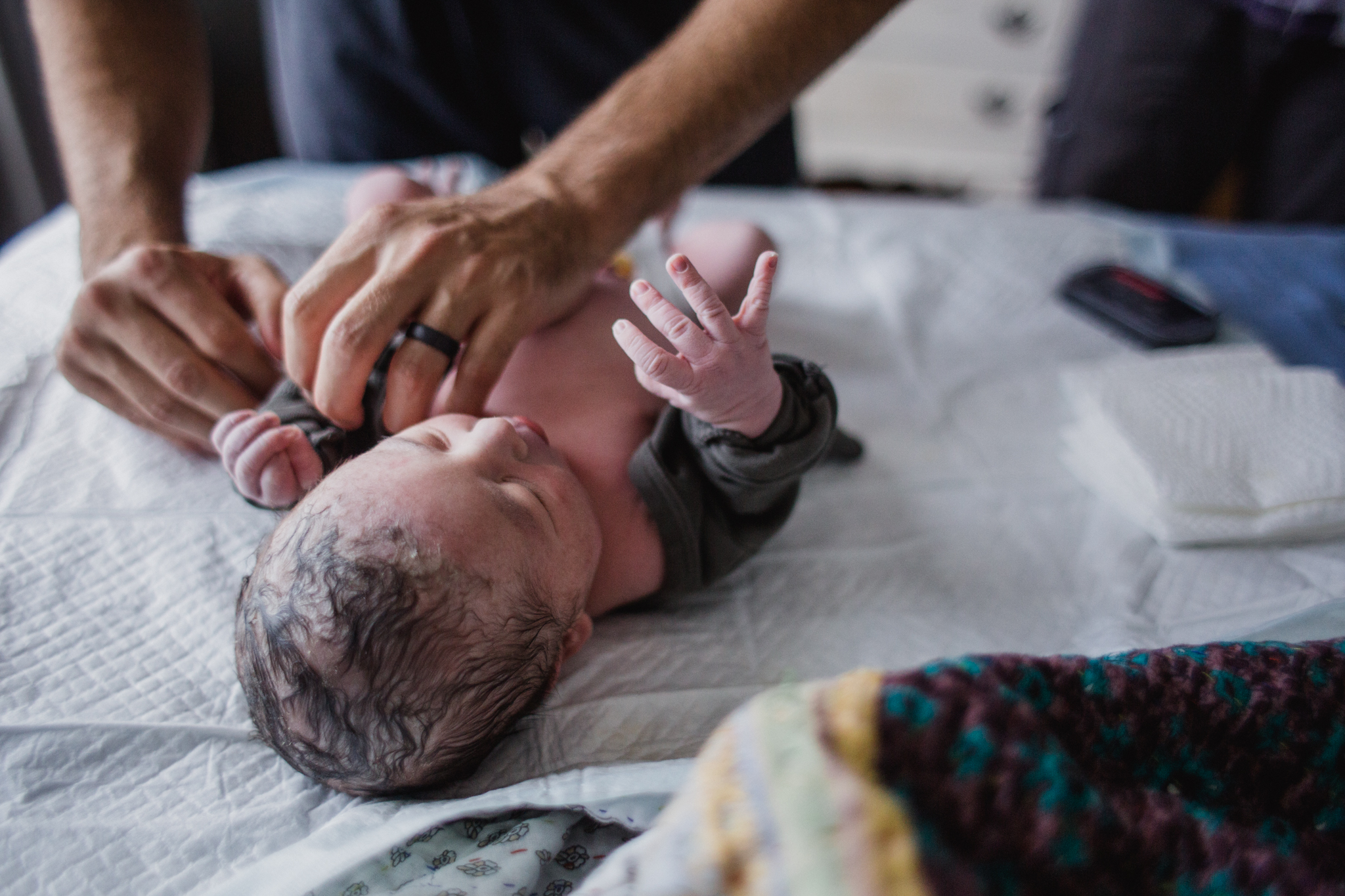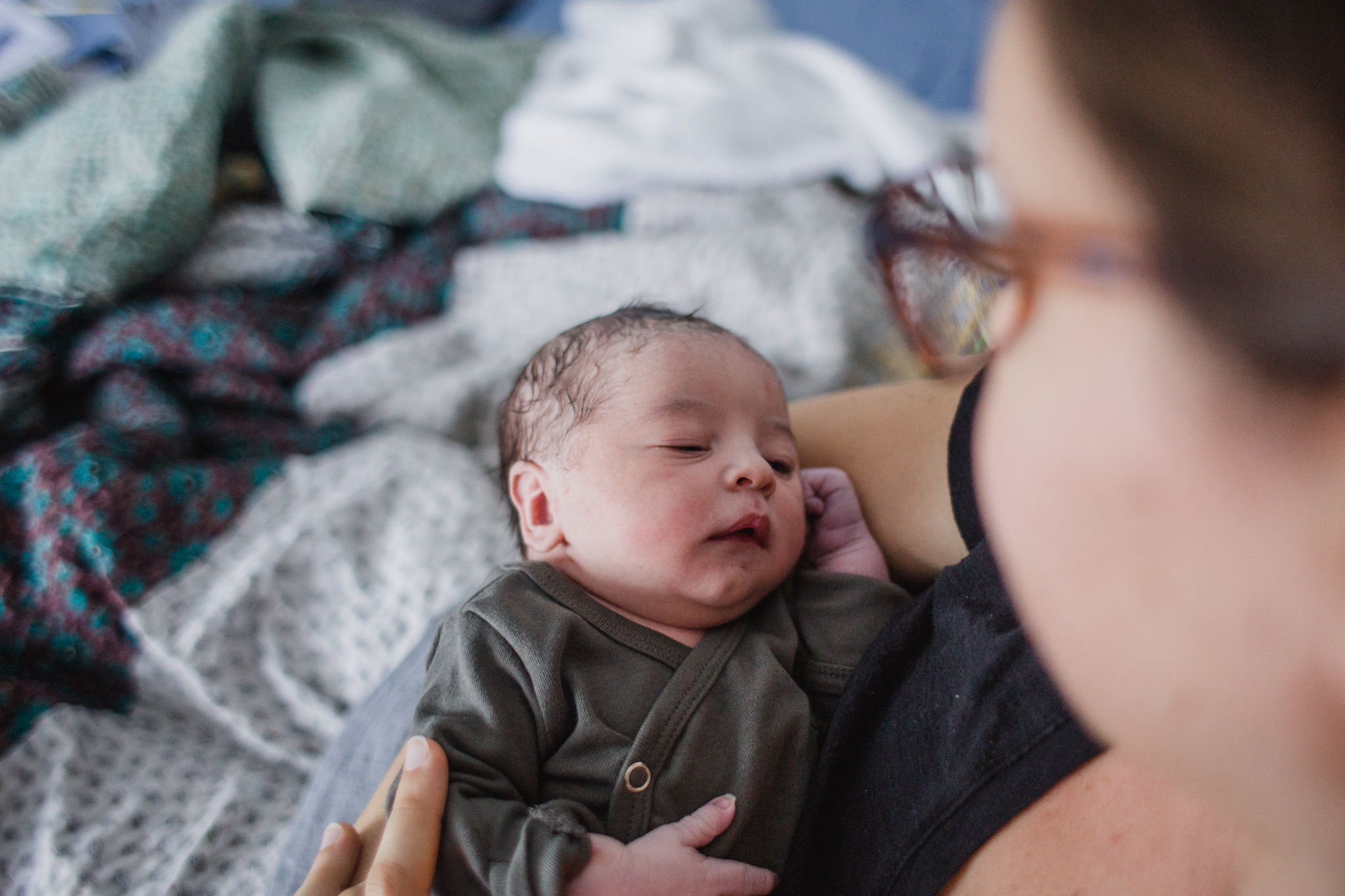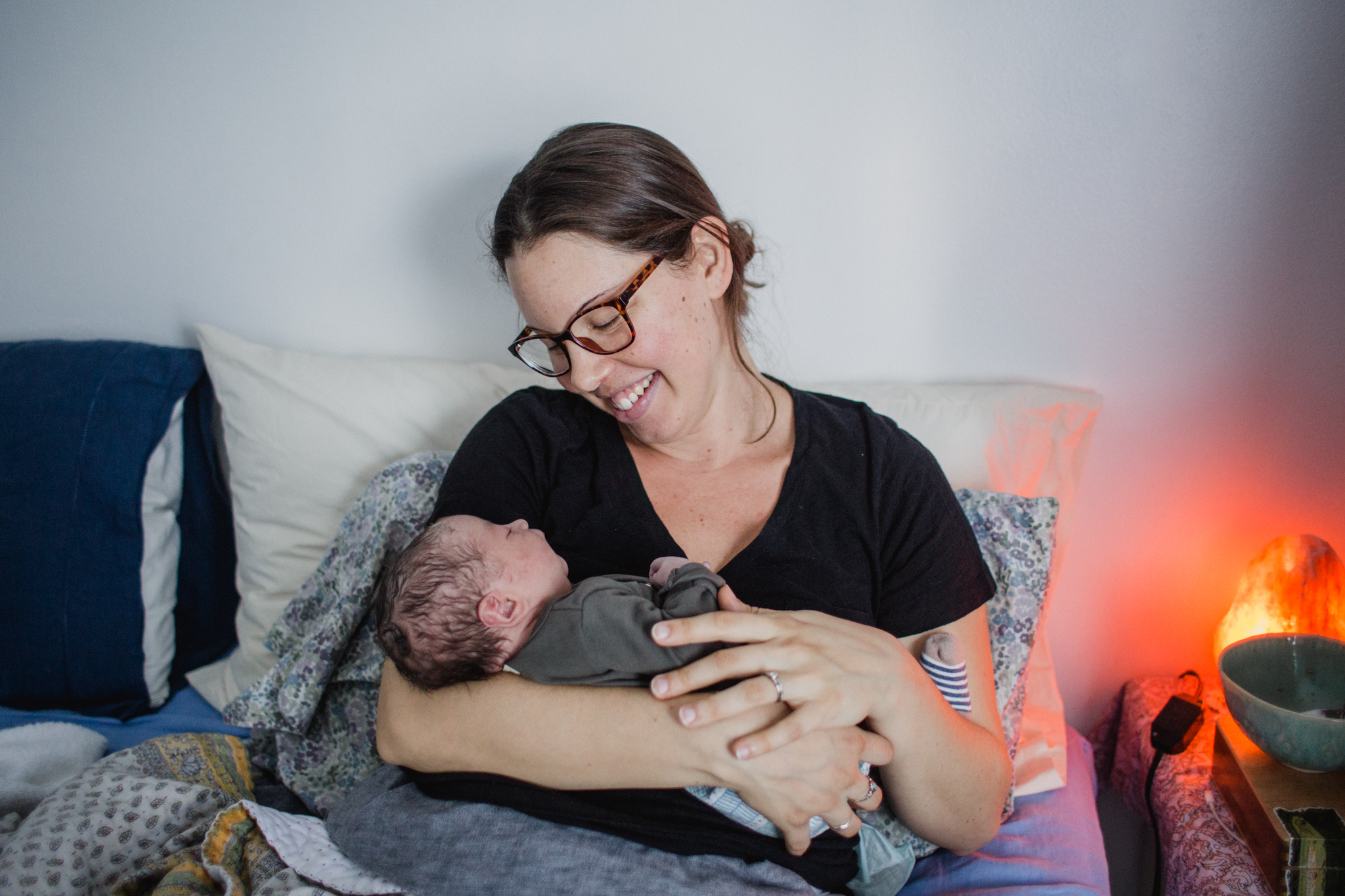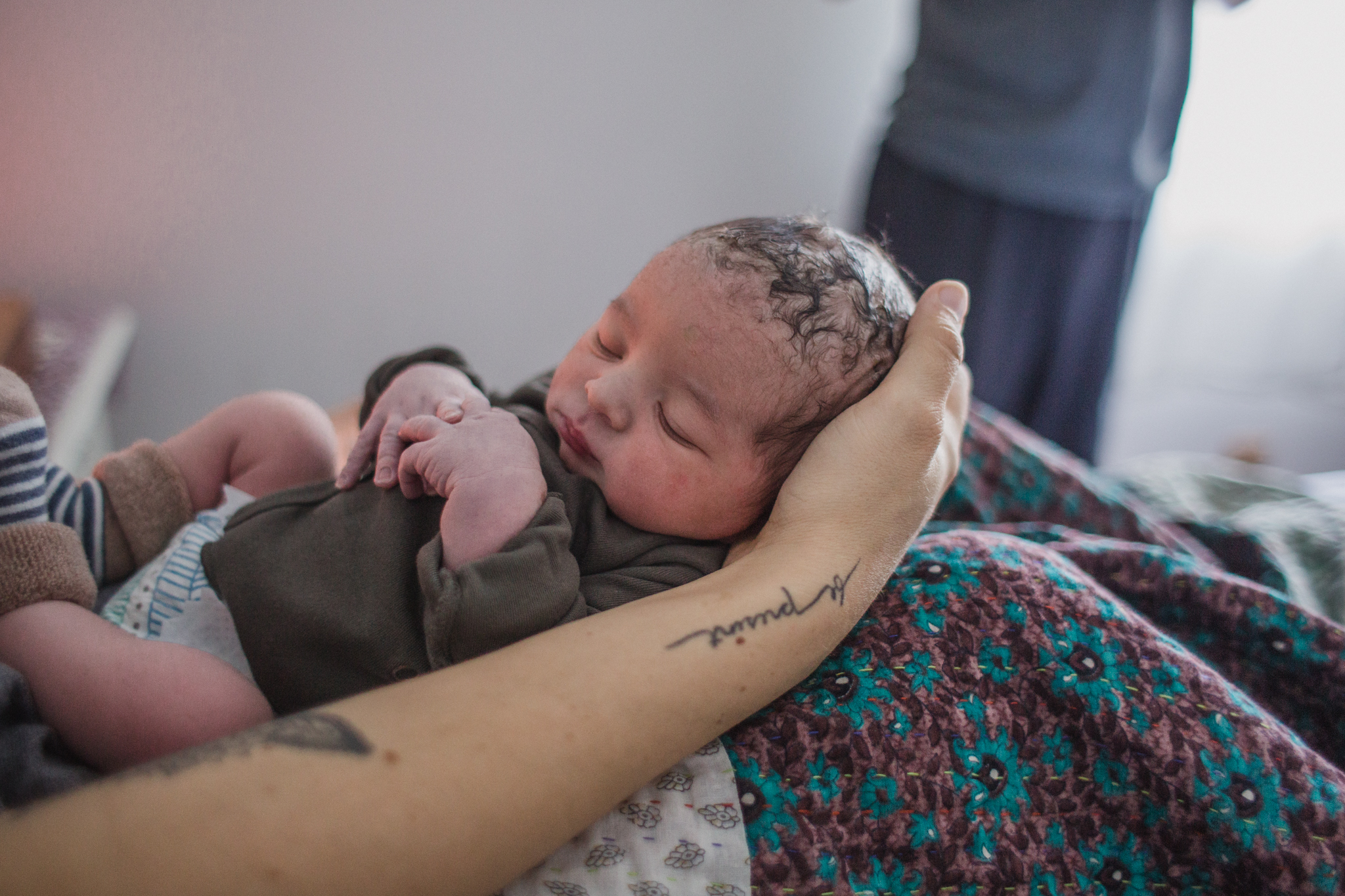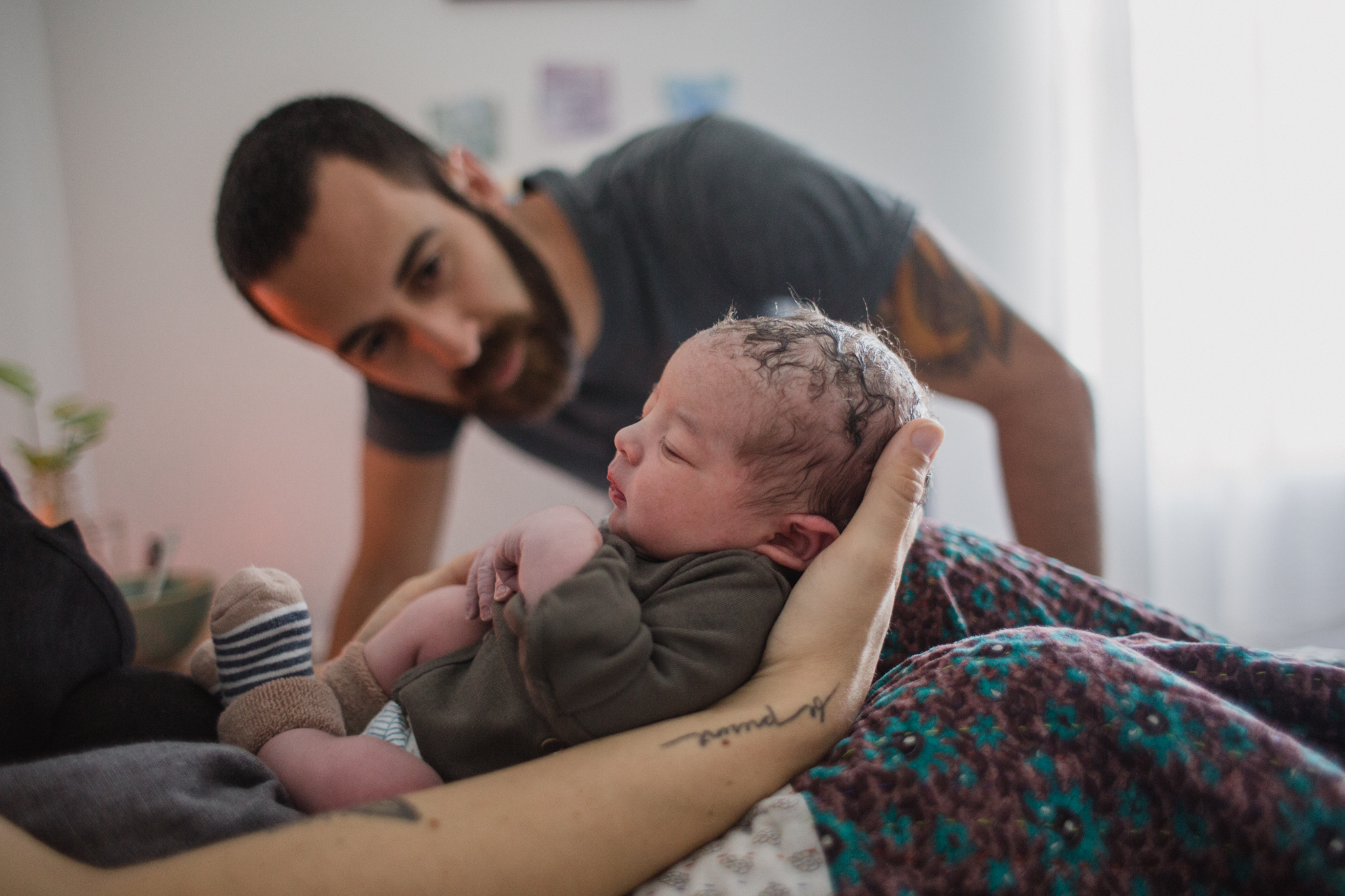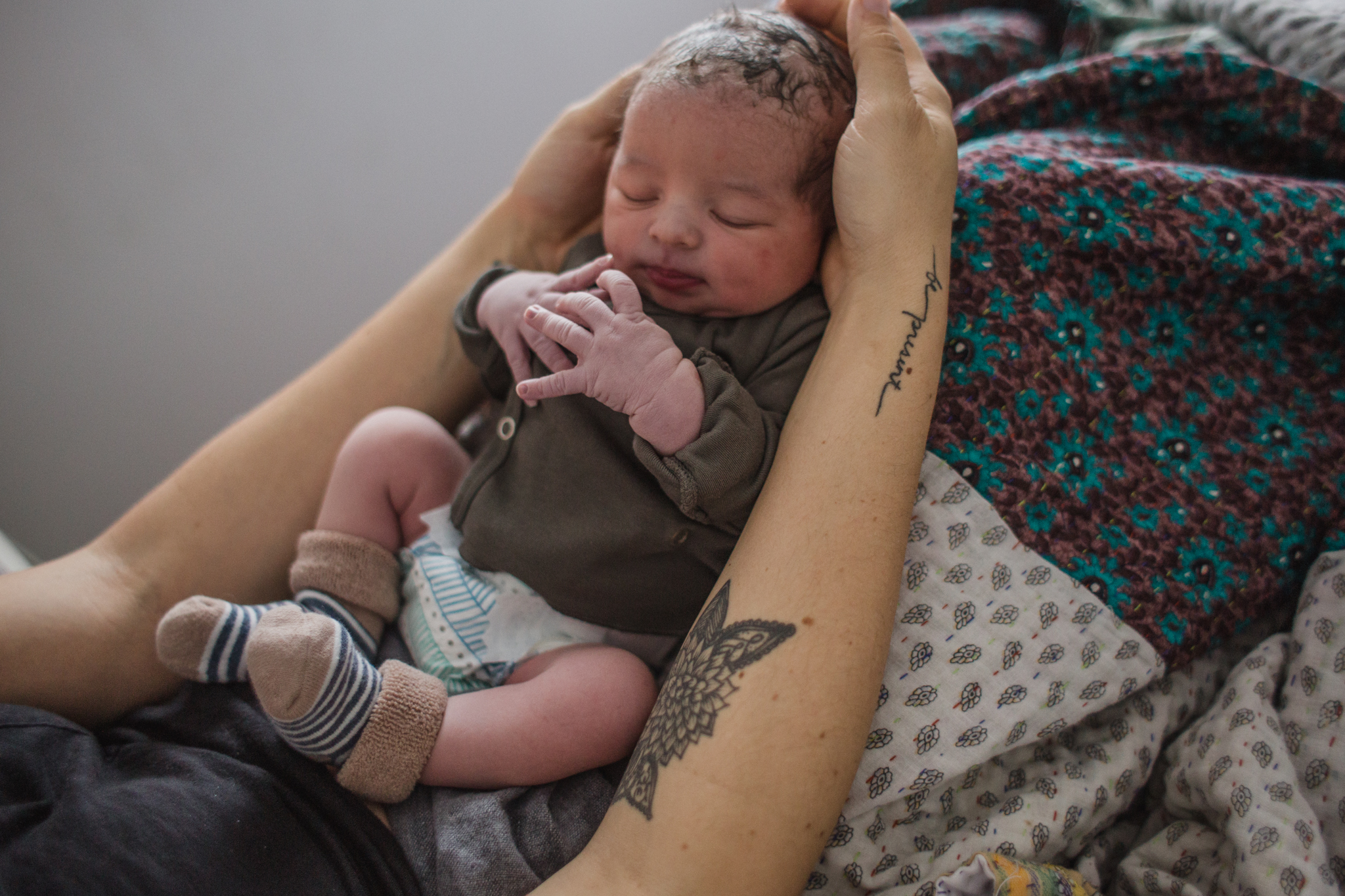September Mama Birth Story
Powerful Woman Empowering Women
I love how mama looks at her first born (daughter) in such awe and admiration as if to say with her eyes — we did it, together!
When I first walked into her labor room in the middle of the night at labor and delivery in Boca Raton, the first thought I had upon seeing her was ‘wow this mama is powerful!’
She was laboring on all fours, at the very end stages of her labor, as her body was naturally progressing to 10cm on its own, without any medications, and I was in absolutely awe of her natural born power.
South Florida is a focal point in the U.S. with the highest c-section rates. And in today’s day, it can be terrifying to be an African American woman giving birth, because the mortality rates and mistreatment of women of color during pregnancy and birth are the highest out of any race of women in the world.
That is why this mama knew she wanted the most natural and holistic and safe birth experience so she made well researched choices when choosing her birth team. She went with a hospital midwife team (CNMs Courtney McMillian and Polina Goldenberg) that have the 3rd lowest c-section rate in south Florida and a reputation for being extremely gentle and natural minded. (Boca Midwifery)
I am so wowed by this amazing first time mom! And so humbled that she would trust me 110% with capturing this moment for her!
Best of all, mama recognizes that I am a birth photographer on a mission and completely stands behind me with sharing her birth photos with you all and this powerful message.
May Mama Birth Story
Best Position to Give Birth in
The best position for the baby to be in to pass through the pelvis is with the head down and the body facing towards the mother's back. This position is called occiput anterior (source: medlineplus.gov)
That is the position this sweet baby girl is being born in, about to be caught by her midwife & her mom.
When I was about to become a mom 6 years ago, I had never seen a beautiful, not intimidating photograph like this one. This doesn't show fear, grossness, chaos, danger. Instead, this image shows grace, peace, comfort, safety. We’ve been taught that birth is a hugely medical process and the scariest moment of a woman's life. But this moment proves that birth can be peaceful, calm, supported and completely safe, where ever you choose to birth if you make smart, educated choices.
The midwife catching this baby is Licensed Midwife, Gelena Hinkley of Peaceful Pregnancy Pathways and Natural Birthworks Birth Center in Margate, FL. She is also our Midwife Highlight of the week.
I have received permission from my birth photography client, a woman of color, to speak out about the safety, tidiness and comfort of her birth. Having your baby the way she did, unmedicated and at home, does not have to be a lower class irresponsible, cheap and messy route to choose as sometimes is the common myth discussed among women of color. Having your baby unmedicated and at home can be empowering, clean, safe, and a wonderful experience for you and your entire family - as this mom felt.
Did you know that the statistics of mortality/complications during labor, birth and post partum are the worst numbers for black women in America?
Key to changing these statistics begins with knowledge during pregnancy. Interview multiple providers with low c/section rates, low mortality rates and high positive feedback, hire experienced doula & make smart choices about the location you choose to birth in.
I am grateful to my birth client for being brave in giving me permission to share photos from her birth. Women of color have suffered far too long, it is time to bring peaceful, supported, empowered birth to all women.






